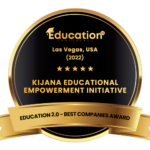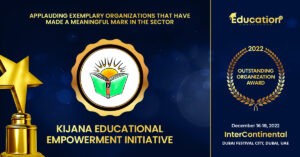
Program
Motivating Environmentally Conscious Youth
Inspired by a generous grant from the Wheaton Franciscan Sisters, of Wheaton, IL, Kijana has developed an ambitious exploratory environmental education program with our students. It includes collaborating with students at other regional public primary schools. Students are also exploring the environment near the Kijana Global Innovation School and beyond.
The program is rooted in the idea that students must be actively engaged with their natural environments and this will strengthen their understanding from an early age of the connectivity of all life. In the first year of the program, 20 exploratory environmental education opportunities were developed and included trips to: Kakamega Forest, Rusinga Island, Ruma National Park, Wayando Beach eco-lodge, Masai Mara, and Kembu Camp. Additionally, we stayed true to the idea of “sharing.” We took students and teachers from two local primary schools, Buchenya, and Emukangu on the Rusinga Island trip, modeling collaboration in education. Many of these students had rarely or never left their local communities so this was a highly impactful opportunity.
Additional elements in the program include tree-planting and a pollinator garden, as well as investing in improved environmental books for the school. For the pollinator garden, this led us to collaborate with Samantha Koches, founder of Nourish All and a former student of Kijana founder, James P. Cummings. Ms. Koches came to Kenya and developed a collaborative team around permaculture and has led us to expand our visions into developing more syntropic farming practices at schools, including creating “food forests.”
We are building a group of young people who understand the interconnectedness of all and have the skills, motivation, and hands-on experience to make a difference.
By supporting local schools and churches and other entities nearby the Kijana Global Innovation School, in Buchenya, and in Kisumu, Nyakach, Bunyore and as far away as Nairobi, we are modeling what a motivated community effort can do to address the climate change challenge humanity faces.
started in 2021
Our Vision
We intend for our students to develop a commitment to caring for the earth and all its inhabitants, as we share the planet with multitudes of other species and protecting our common habitat protects and enhances life for all of us. Our students will be future changemakers and as they develop into their future selves, a sense of discovery and imagination will provide them with powerful skill sets for success. These skills are birthed from a desire to explore.
History of the Program
The program began through the relationship built between the Wheaton Franciscan Sisters of Wheaton, IL and James P. Cummings and Kijana. The Wheaton Franciscan Sisters were looking for groups that have a demonstrated commitment to environmental protection and who could and would sustain their commitment to promoting the values of “Care of Creation,” that is caring for all of the earthly inhabitants, plant, animal and human. We were introduced by a shared connection and the Wheaton Sisters awarded a grant after a series of interviews and applications to develop the “Care, Share, and Explore” program, which was envisioned by James P. Cummings in collaboration with a lay volunteer, Pat Faivre.
Initial Action Steps and Accomplishments - 2022
Our primary goal was to instill in scores of youth, their teachers, and their families a life-long dedication to environmental appreciation and a quest to build a better world in which people interact more collaboratively with themselves and the natural world. Our expectation was that the learned outcomes of the experiences that the students and teachers enjoyed and the experiences themselves would build a foundation for future thinking, exploration and intentional impact which would scaffold through society and time. We developed a structured environmental education program at our new Kijana Global Innovation School, which provided opportunities for students to develop exploratory mindsets through direct and active interaction with their local and regional environment. The program was created to bring students out into the environment for direct experiential education. Students and teachers will remember these collaborative experiences, which will serve as a fulcrum for learning and personal development in the future.
Our specific accomplishments included:
- Growing & planting 1 million tree seedlings in the local communities
- Taking students on engaging environmental field trips (local & distant)
- Acquiring and utilizing resources for camping, and exploration
- Providing and utilizing technological resources like laptops, tablets, binoculars, and cameras
- Acquiring and utilizing environmental education books and other educational materials
- Maintaining links and creating new ones with local schools and communities to expand the knowledge of environmental education
- Creating a pollinator garden, cone garden, mushroom garden, and entirely student-run garden at the school in addition to maintaining the preexisting gardens from years past
- Teaching agricultural and entrepreneurial skills with conservation and sustainability in mind
- Screening relevant documentaries & engaging in in-depth discussion about the environmental concerns depicted
Our Impact in Numbers in 2023



Program Highlights - 2023
This year, we added 9 excursion tours, 6 local and 3 far away. The locations included Rusinga Island, Nakuru and Naivasha counties, Nakuru National Park, Mt. Longonot, Kariandusi, and Lord Egerton Castle. At Badilisha Farm, the students learned about sustainable permaculture and seedbeds, and planted and transplanted seedlings (eucalyptus, pine, and moringa). In total, 28 additional schools, 17 ranging from Sabatia, 5 in Kisumu, 5 in Nyakach and 1 in Muhoroni benefited from the program this year. In addition to our other tree planting efforts, all of these schools have now been outfitted with nursery beds to spread the sustainability of the surrounding communities.
The program also took students and teachers to the Kakamega Agricultural show, where students explored new farming practices and had the opportunity to establish a new vegetable garden of their own with sukuma wiki, spinach, molokhia, cow peas, and spider plant vegetables. The students manage the gardens by themselves and harvest the vegetables to sell. This not only has empowered them to give back to their communities and taught them sustainability, it has also helped them gain entrepreneurial skills.
Nourish All and Cadif Kenya, collaborated to teach the students about mushroom farming and cone gardening to enable sustainable food production and food security within the schools. Nourish All also introduced new crops to the school gardens from both this year and the past year such as zebra beans, basil, and zucchini. We have already harvested coriander, mushrooms, amaranthus, and molokhia.
In general, the program advanced student understanding of biodiversity, ecosystems, and conservation. This philosophy culminated in the development of an environmental club at the school. These students came up with a waste management project and won a grant from the Wildlife Warriors team Sayari and Disney partnership that they will use to carry out their project.
The program has already yielded much change, not only in the areas where the seed beds, lessons, gardens, and trips occur but also in the hearts and minds of the students involved who Kijana hopes will continue on into the world as more sustainable and earth-conscious adults enacting positive change.
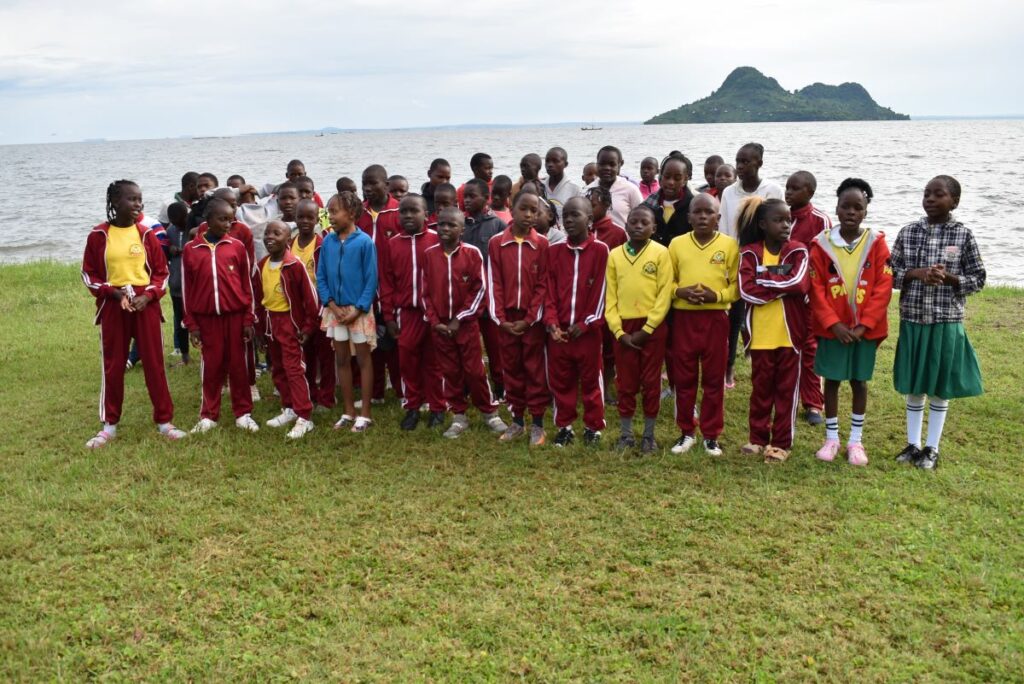
Program
Student Exploratory Activities
Education is truly an equalizer for all children, and Kijana always strives to give equal opportunities for all students.
Heading outside and being immersed in nature, helps children improve their emotional, intellectual, and behavioral development. Outdoor learning helps foster the development of creativity, problem-solving, independence, and confidence.
Student Exploratory Trips - 2022
Ambururu Falls
Ambururu Waterfalls is located in Musanda, Mumias sub-county, Kakamega, Kenya. It is about two hours from the Global Innovation School. While there, students toured and discovered different types of trees, viewed impressive waterfalls, and swam in the fresh water swimming pool. They also went bird watching, rock climbing, played in the childrens park, and participated in a conservation and environmental training program. Students interacted with a traditional posho mill that uses water turbines for its operation. They enjoyed different activities like sliding, swinging and bounce castling which really excited our pre-primary school students.
Ambururu Falls waterfall is the main attraction of this destination. It makes the trip a memorable one for the students. Ambururu Falls is a hidden treasure in Western Kenya.
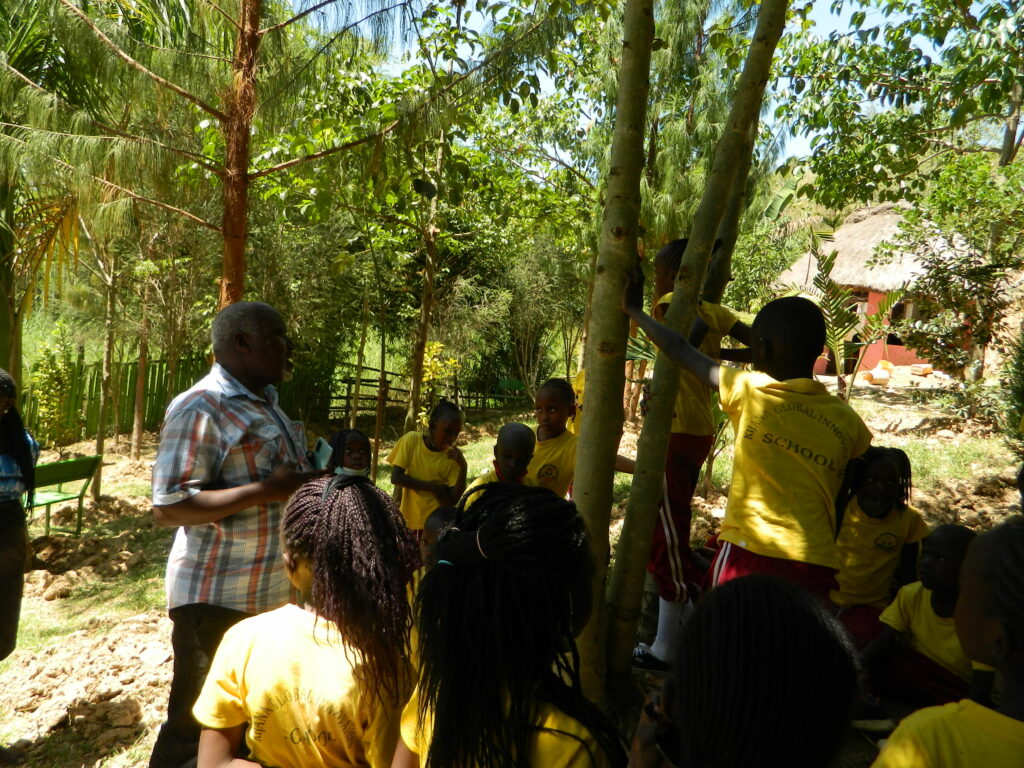

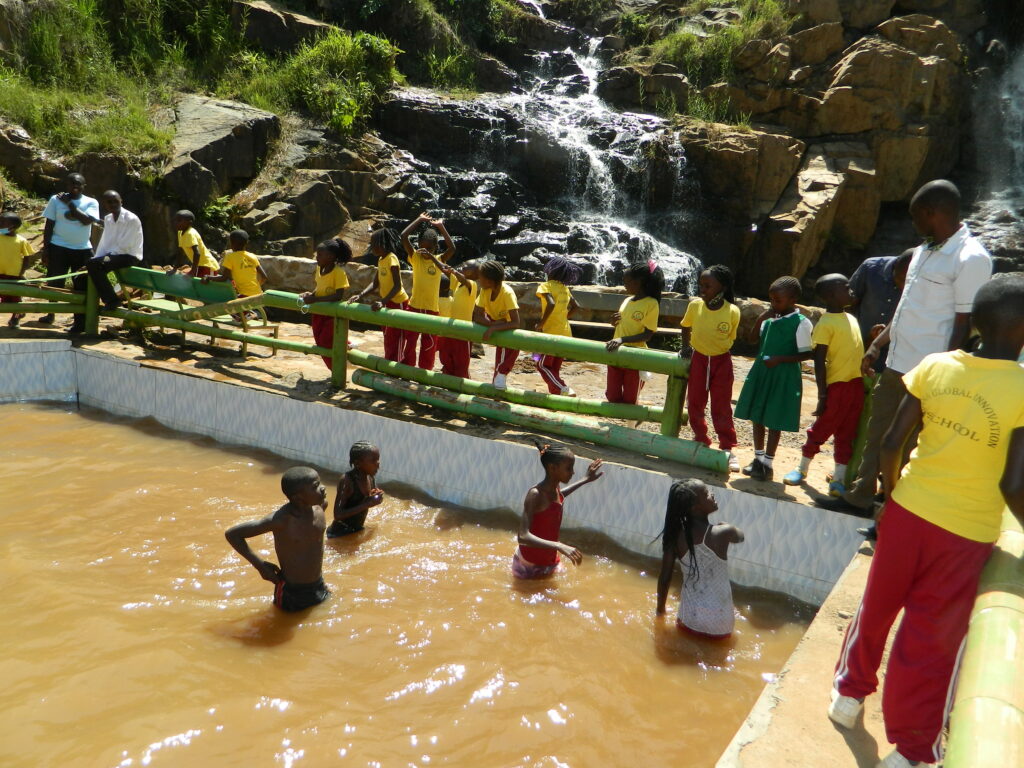


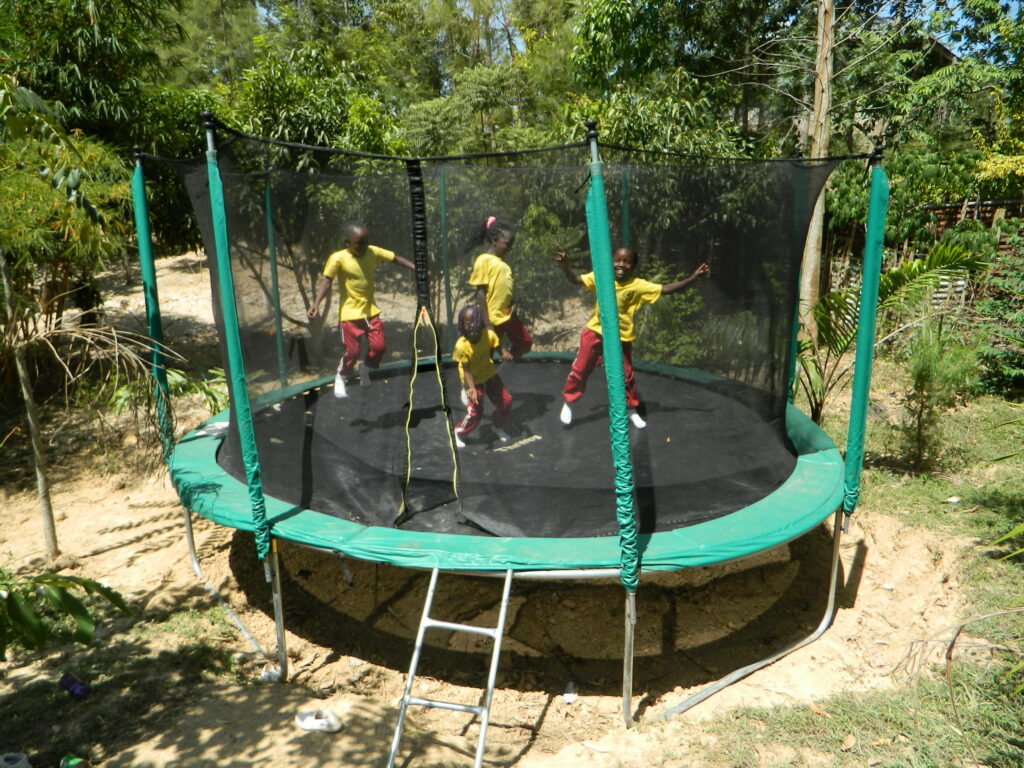
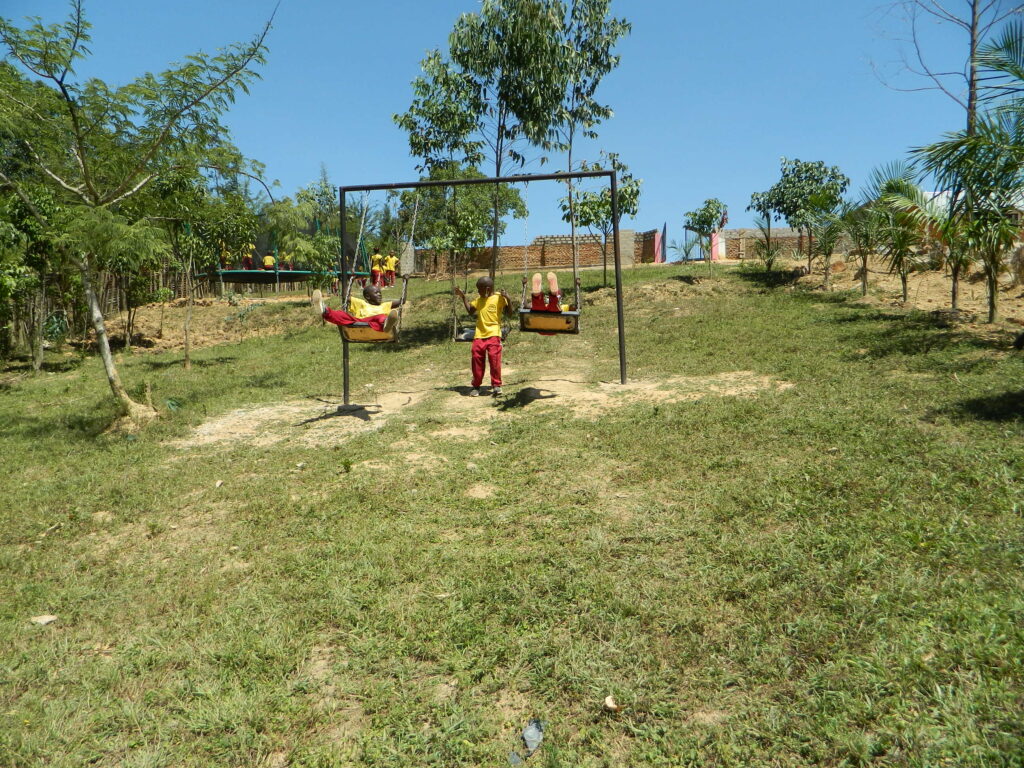
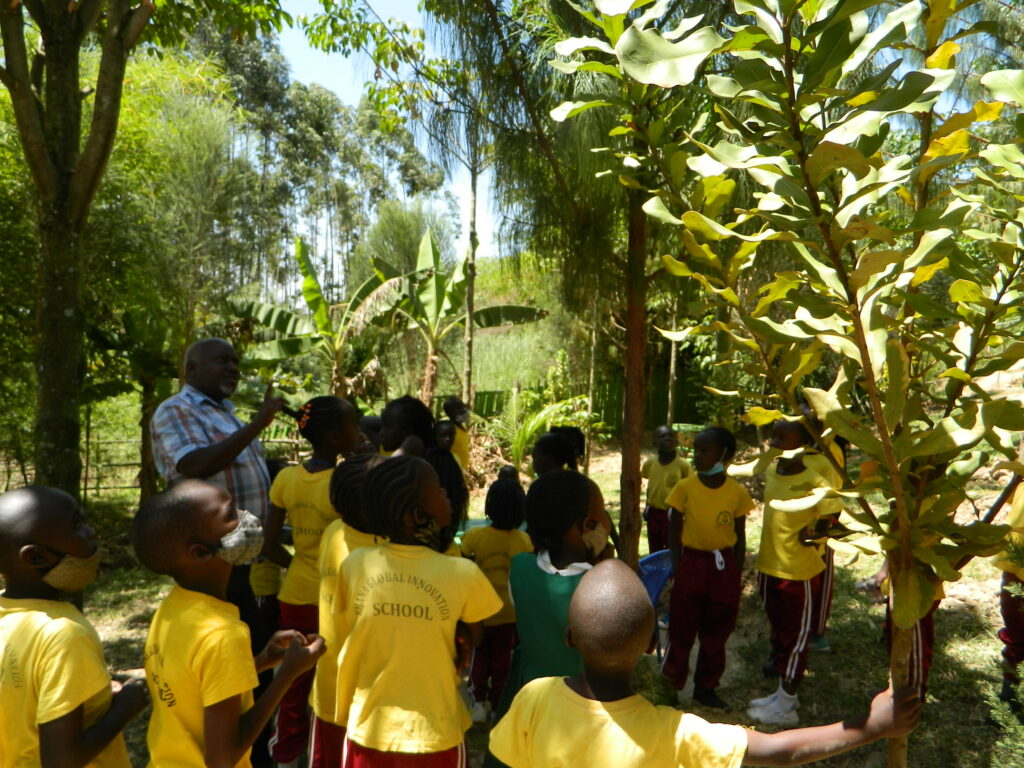
Buchenya Permaculture
Kijana’s effort to implement and share permaculture with schools like Buchenya Primary is inspiring others to care for the earth. Why permaculture? Permaculture is important, because it promotes a rich bio diverse ecosystem, using organic farming principles. Permaculture utilizes natural components of the ecosystem and discourages use of chemicals in our farms. Permaculture cares for the earth by emulating how we can work with healthy natural ecosystems rather than fighting against nature.
Bilha Maraba, a Buchenya Primary School teacher, is passionate about changing lives through smart farming, leads the effort there. She inspires the youth and the community by teaching them how to use what they already have for sustenance and self-reliance. Buchenya Primary School utilizes its available space well, porviding a unique, functional, and innovative gardening design. Bilha claims that the permaculture produced higher yields in a more sustainable and environmentally friendly way compared to conventional farming methods. Teacher Bilha continues to practice innovative gardening. She reports that gardening at the school has enhanced the nutritional value of the school lunch program, stopped reliance on a few staple crops, and demonstrated that alternative crops can be grown in place of maize. Buchenya Primary School is one of several successful schools benefiting from permaculture farming through Kijana’s partnership program.
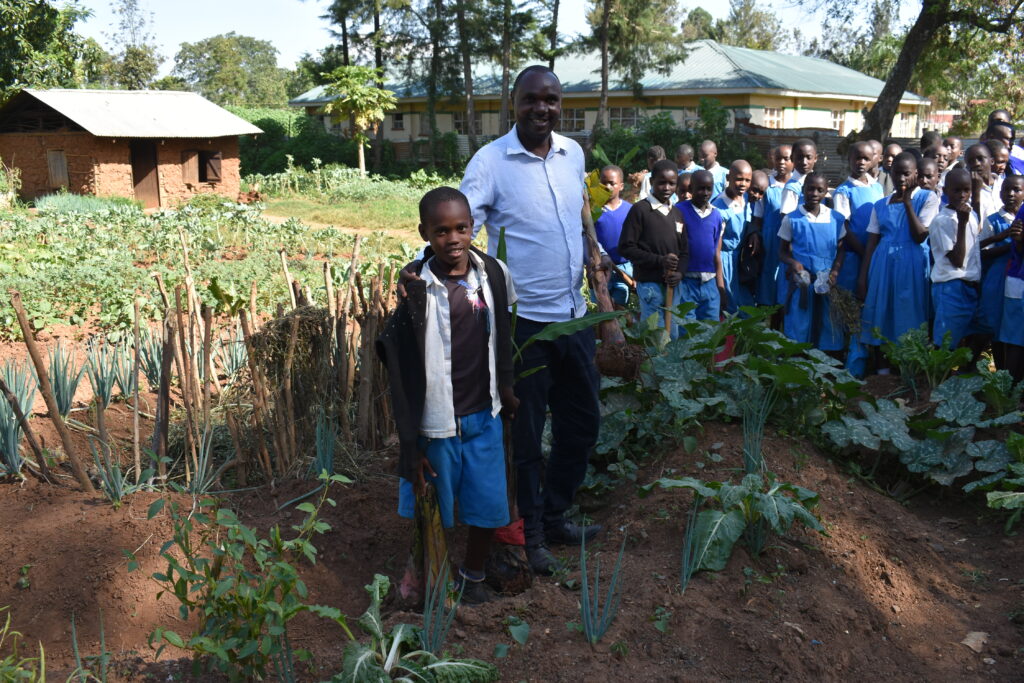


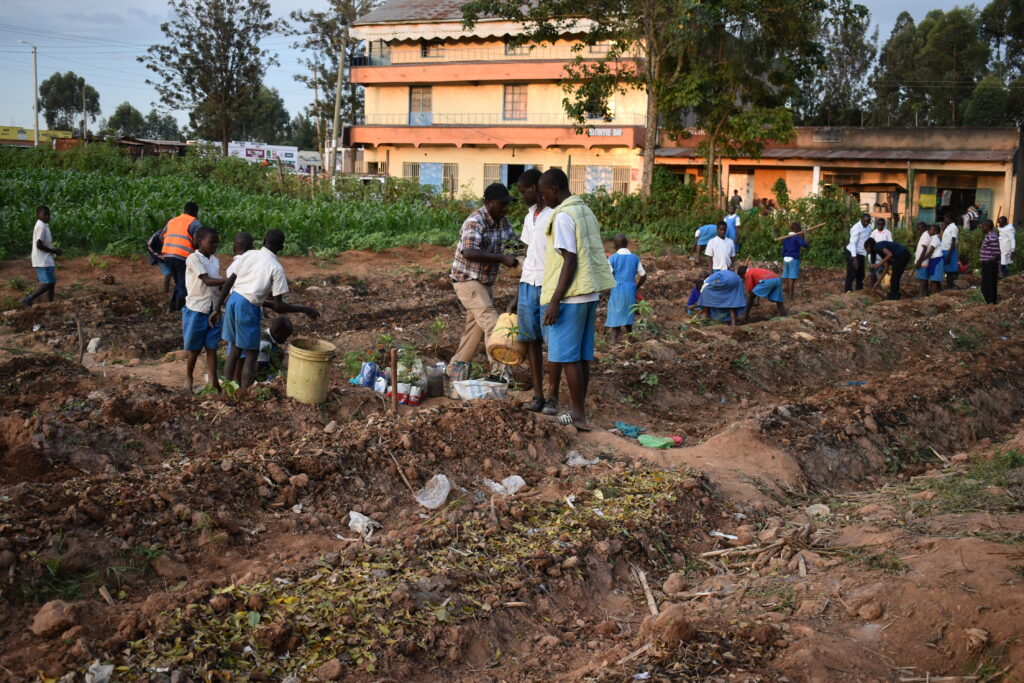
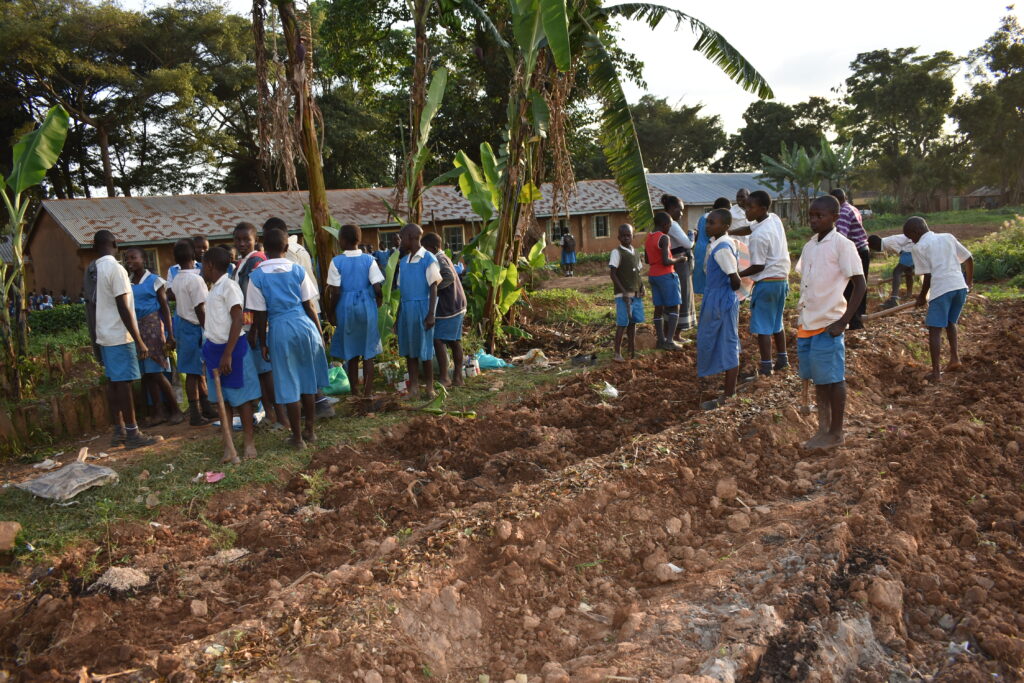
Buchenya and Emukana
In April of 2022, Kijana sponsored 10 students from Emukangu Primary School and 10 students from Buchenya Primary School for a three day education trip to Rusinga Island. The trip gave the students a great opportunity to board a ferry for the first time and they were also equipped with knowledge about permaculture and environmental conservation. Students had incredible fun and it was a thrilling experience since some students have never ventured from their village.
It’s really exciting to report that most of the activities they learned from the trip have been implemented at their schools, while also serving as a model for other local schools and communities.
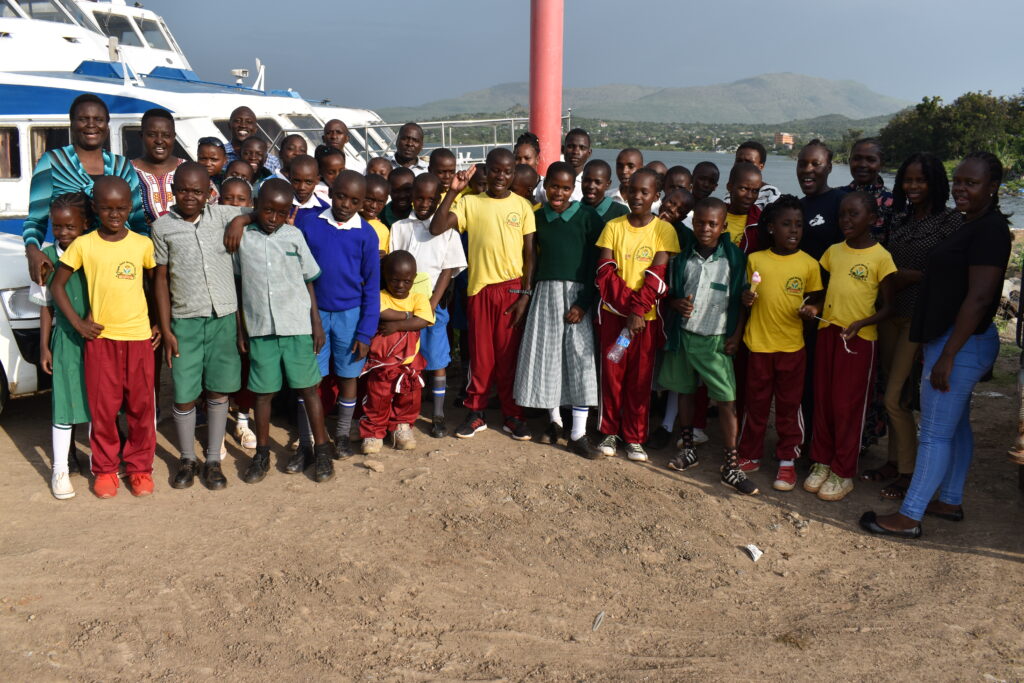
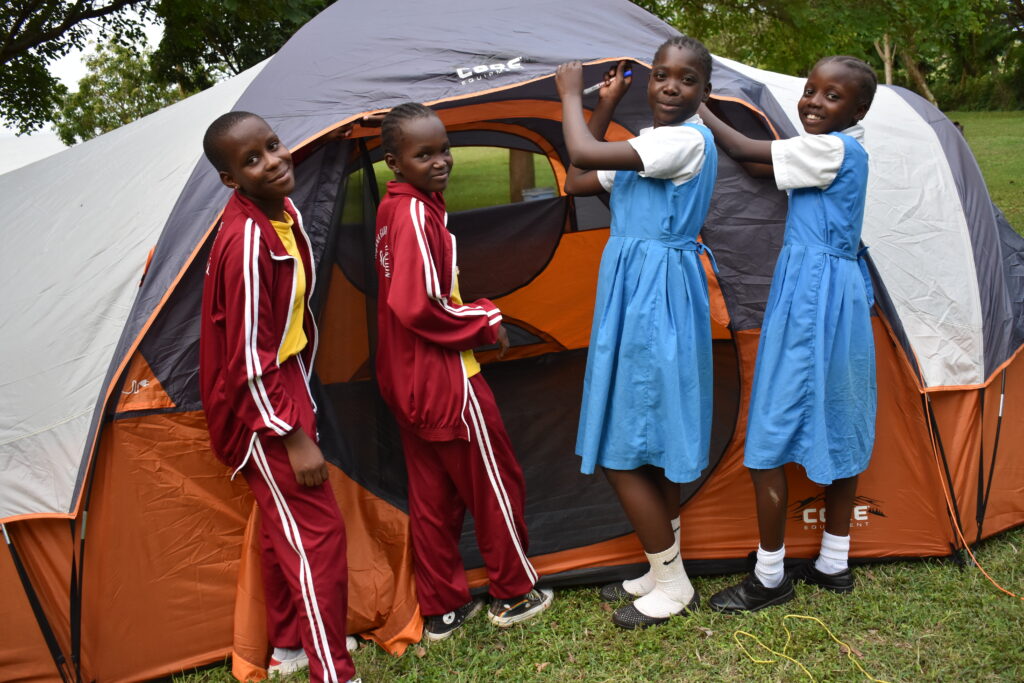

Kakamega Forest
Students from grades 4 through 7 adventured to Kakamega Forest for two days and camped, bird watched, hiked, and learned of the importance of the forest to the regional eco-system. This beautiful forest is home to various mammals including bush pigs, giant forest hedgehogs, colobus monkeys, De Brazza monkeys and pottos. Some of the birds to be seen there include: the Blue Headed Bee Eater, Black Billed Turaco, Turner’s Eremomela and Grey Parrots.
Day one, students hiked the forest to learn about the many different species of trees. Forest rangers educated students on the importance of conserving the environment for future generations. Camping in the forest provided students with an awesome and relaxing environment as they experienced the singing of birds and monkeys. Kakamega Forest is an important water catchment; the Isiukhu and Yala Rivers flow through the forest and gather tributaries from it. The terrain is undulating, with often steep-sided river valleys. The soils are well-drained, deep, heavily leached, clay-loams and clays, of generally low fertility. Rainfall is c.2,000 mm/year, decreasing from south to north, and apparently declining due to deforestation.
Day two, students hiked for three hours at Lirhanda Hill. Their trek covered a distance of 10.7 km. They explored ‘batcave’, a 25m long former mine shaft which is home to several batscaves and enjoyed refreshments by the river. Kakamega Forest is a tropical rainforest and is Kenya’s only tropical rainforest. It is Kenya’s last remnant of the ancient Guineo-Congolian rainforest that once spanned the continent. The forest lies on undulating terrain, mostly between 1500 and 1600 meters in elevation. It is located in the watershed of the Isiukhu River and Yala River, which flow through the forest before emptying into Lake Victoria. The forest is home to over 380 species of trees, 330 species of birds, 27 species of snakes, 7 species of primates, over 400 species of butterflies and several mammals.
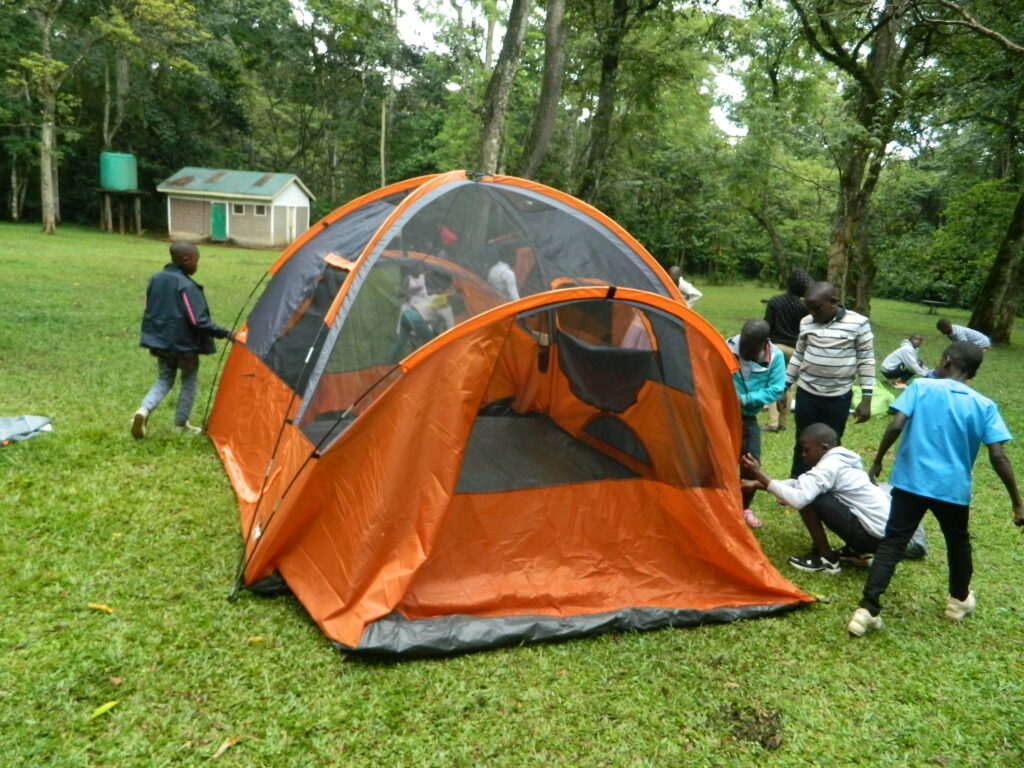
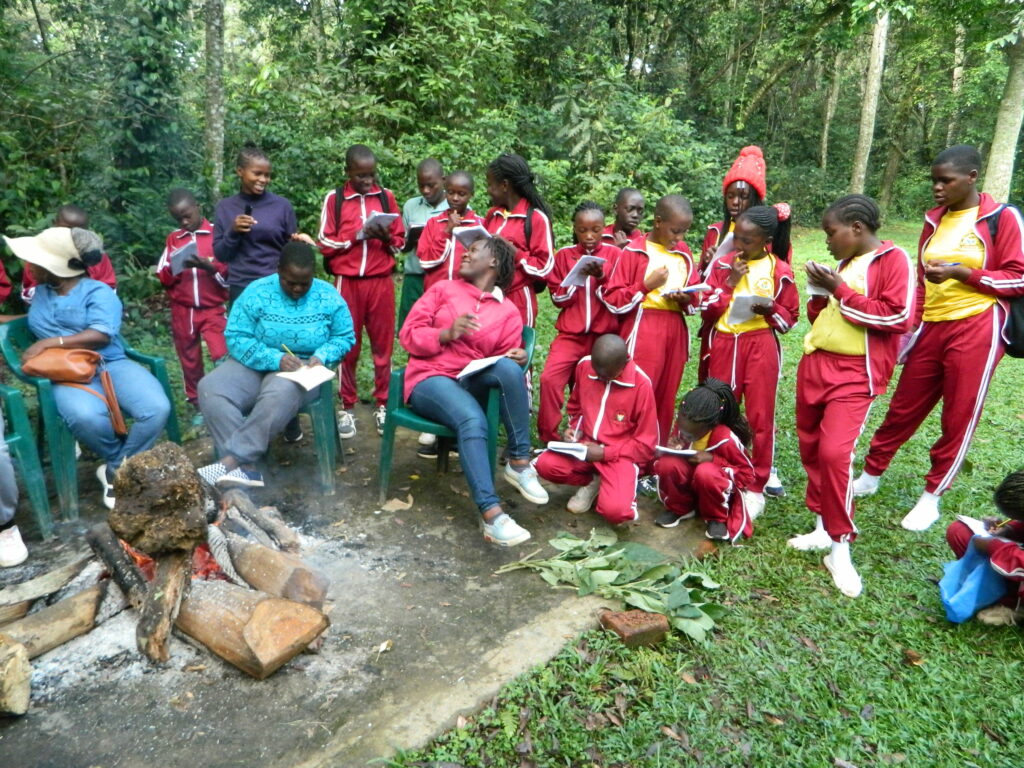
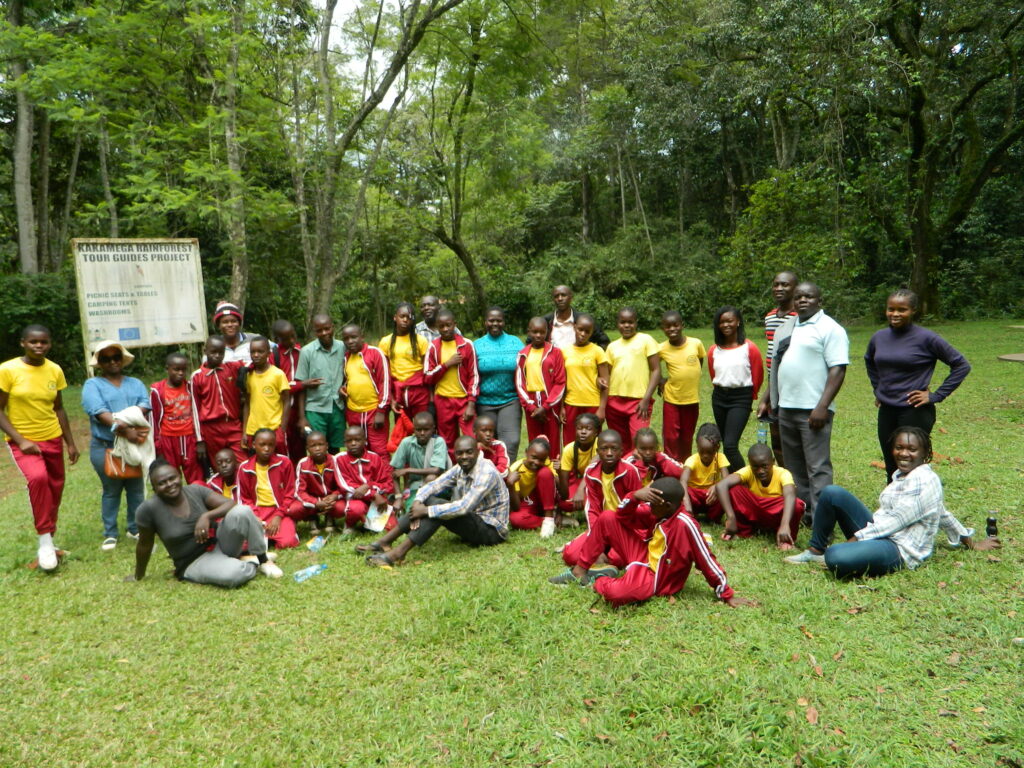
Kembu Camp
Students from grades 4 through 7 visited Kembu Campsite in Njoro, Kenya. Kembu means chameleon and it’s designed in the shape of a chameleon. Students participated in a vast number of activities including: hiking, archery, an obstacle challenge, sheep shearing, horse watching, and a locating hidden items game. Three days in Kembu had a positive impact on our students. It provided some students the opportunity to travel beyond their county for the first time in their life.
The art of camping is to discover that comfort and fun can be had without all the trappings of civilized life. The distillations of essentials down to only a few basic needs are all that is necessary. These kinds of discoveries play a key role in the development of the qualities and attributes that students will need to survive and thrive in a changing world. They are therefore an important part of the curriculum for all students throughout their time in any school. Students can build these experiences up to develop comprehensive expedition skills training and preparation no matter what stage they are in their education.
Kembu provided our students with a nice and safe field centre from which to base all experiences, from camping in the garden, to camping out on the farm, in the woods, and eventually to go and hike day expeditions through the forests of Mount Kiplombe.
All these activities provided excellent opportunities to help students learn how to look after themselves, make sound judgments and decisions and take responsibility for their actions. It allowed students to experience a greater level of self-awareness and concentration, as well as gain awareness of others and the environment around them. It allowed students to learn about how they personally react, behave and cope when things become uncomfortable, difficult or challenging.
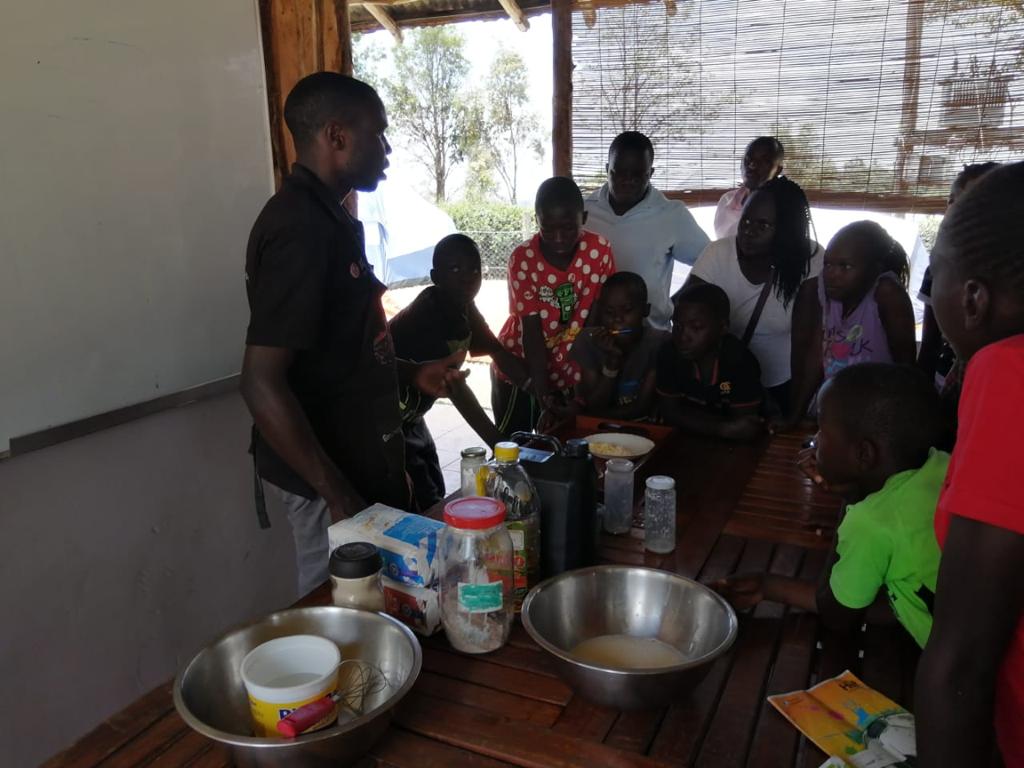
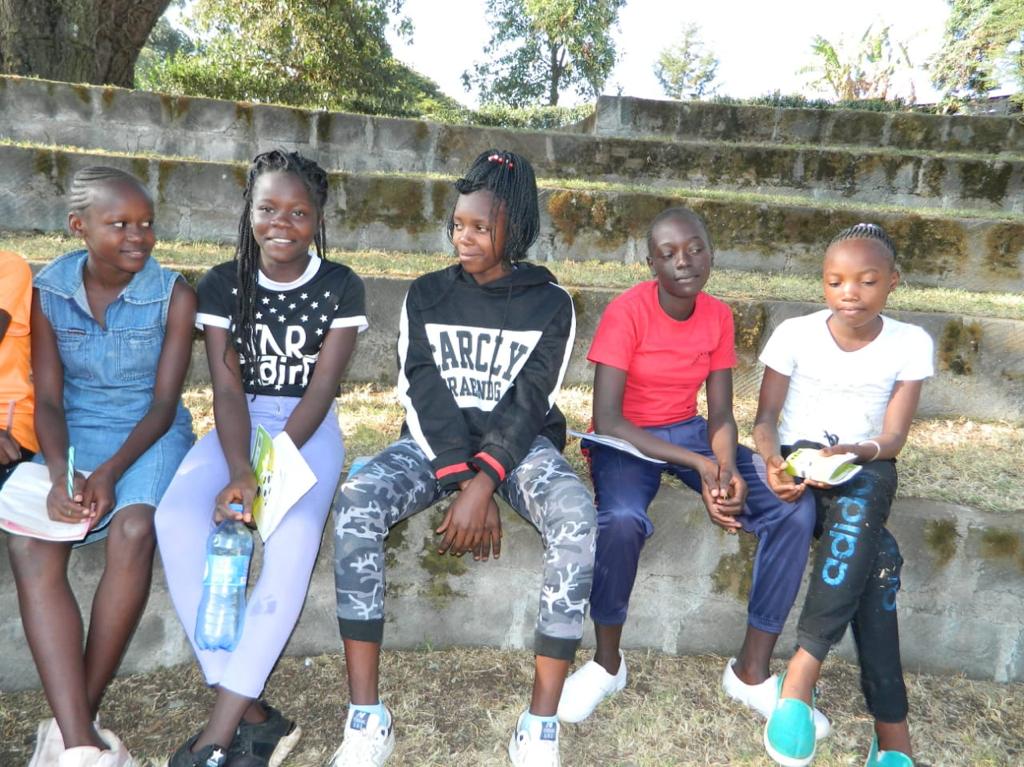
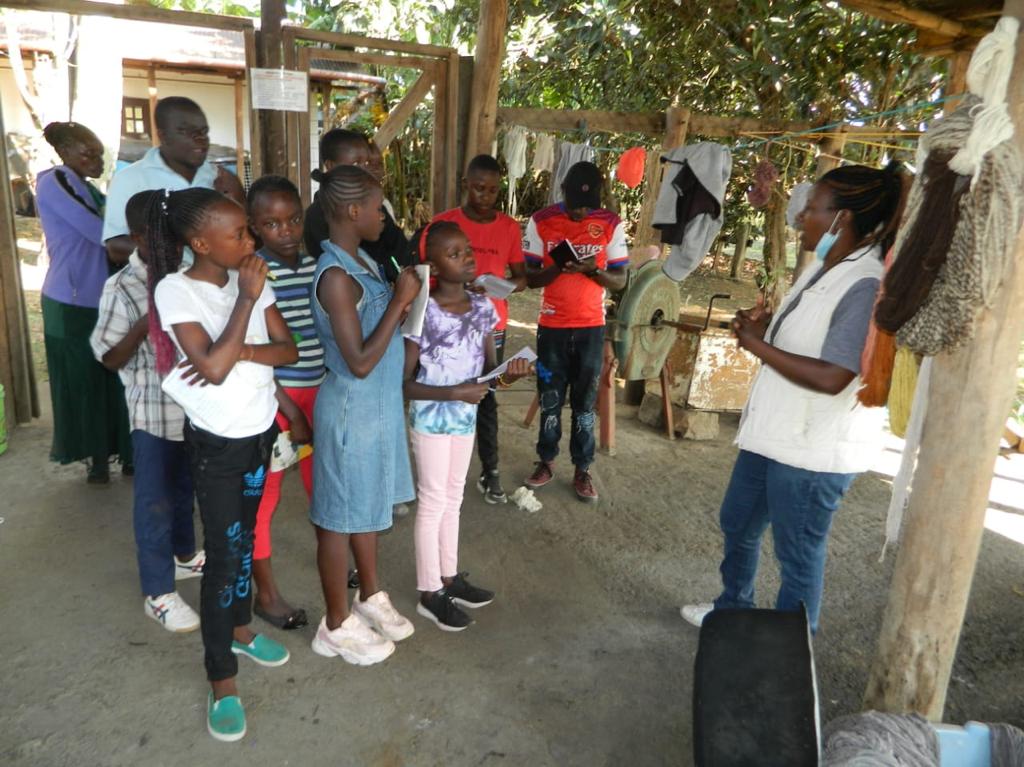
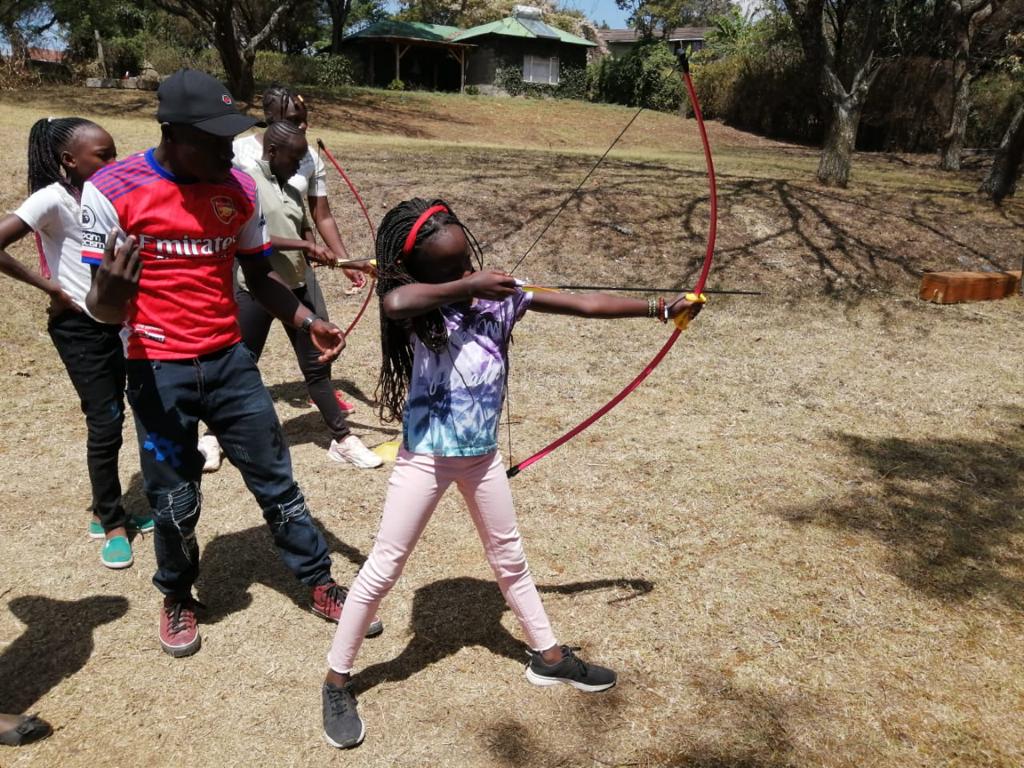
Rusinga Island
During Spring, the Kijana Global Innovation School collaborated with two regional public primary schools; Buchenya Primary School and Emukangu Primary School for a trip to Rusinga Island. Sixty-five students from the three schools attend. For many, it was their first time experiencing riding a ferry and seeing Lake Victoria.
At Rusinga Island, students visited and stayed at the Wayando Beach Eco-lodge, explored permaculture activities and tree planting programs, as well as visited Ruma National Park. At Kakamega Forest, students camped for two nights and hiked in the forest and learned of the importance of the forest to the regional eco-system. While visiting Kembu Camp, they learned about milk cows, making butter, knitting, and participated in archery and team building activities. Our young explorers also had the chance to meet and learn from the “Wildlife Warriors” of Kenya, an organization dedicated to protecting wildlife. The Masai Mara was a major excursion as most of our students have rarely left their local community. Upon return, students will participate in reflection activities and write about and express the experiences artistically. It was a powerful experience of their young lives.
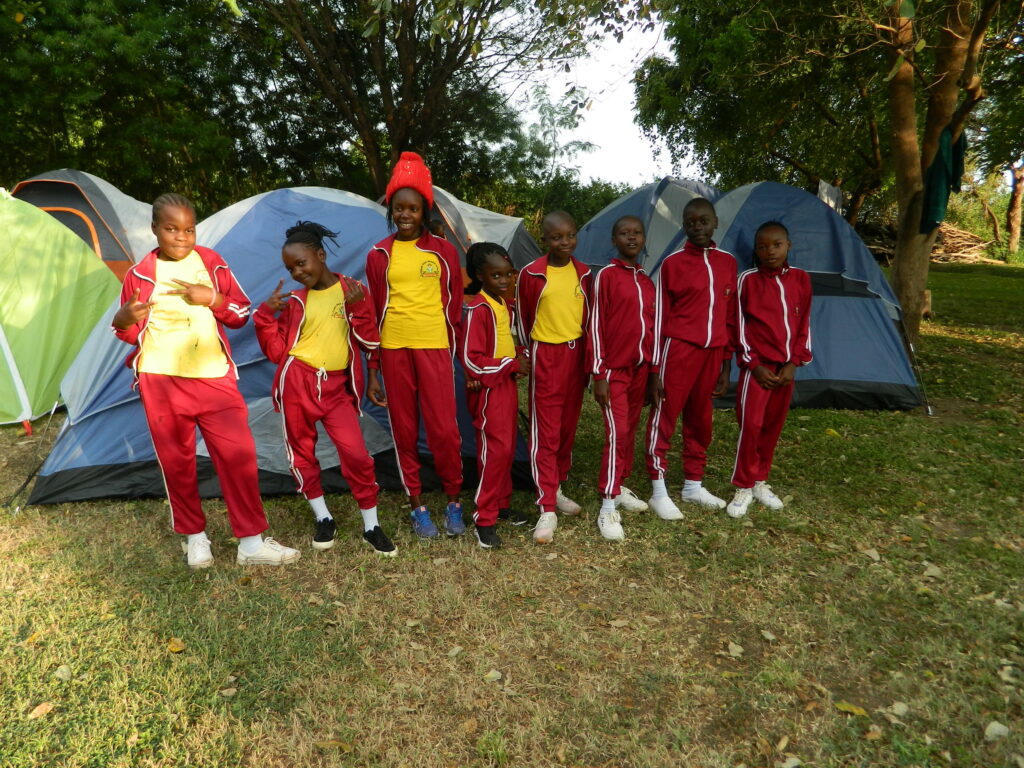
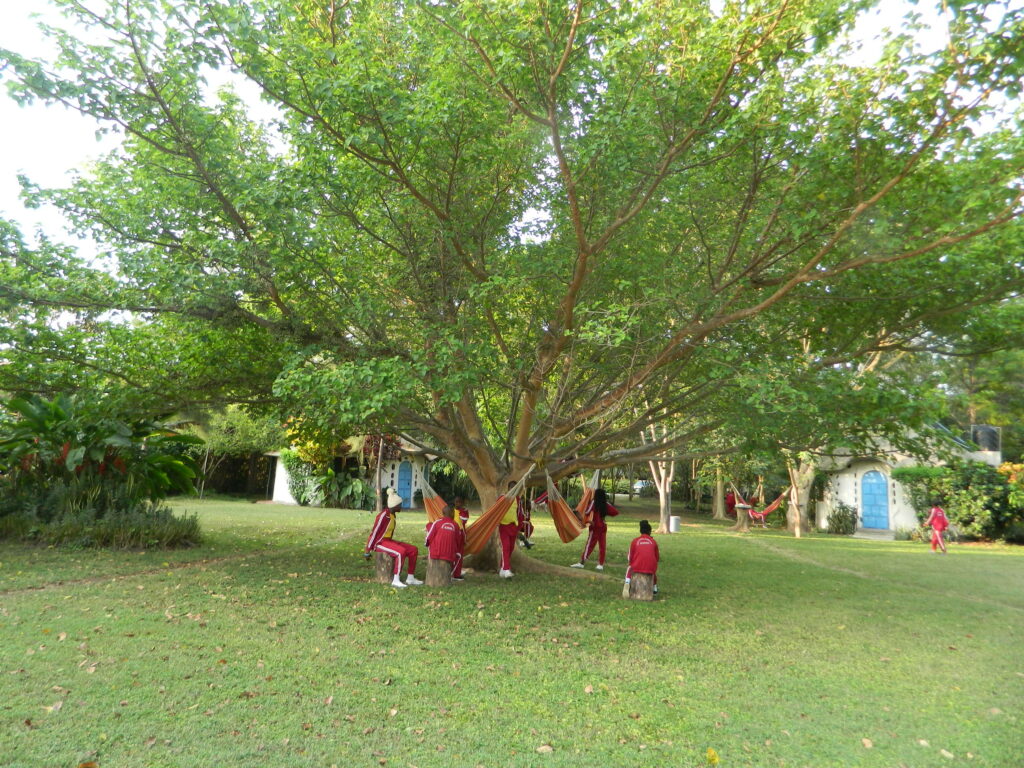
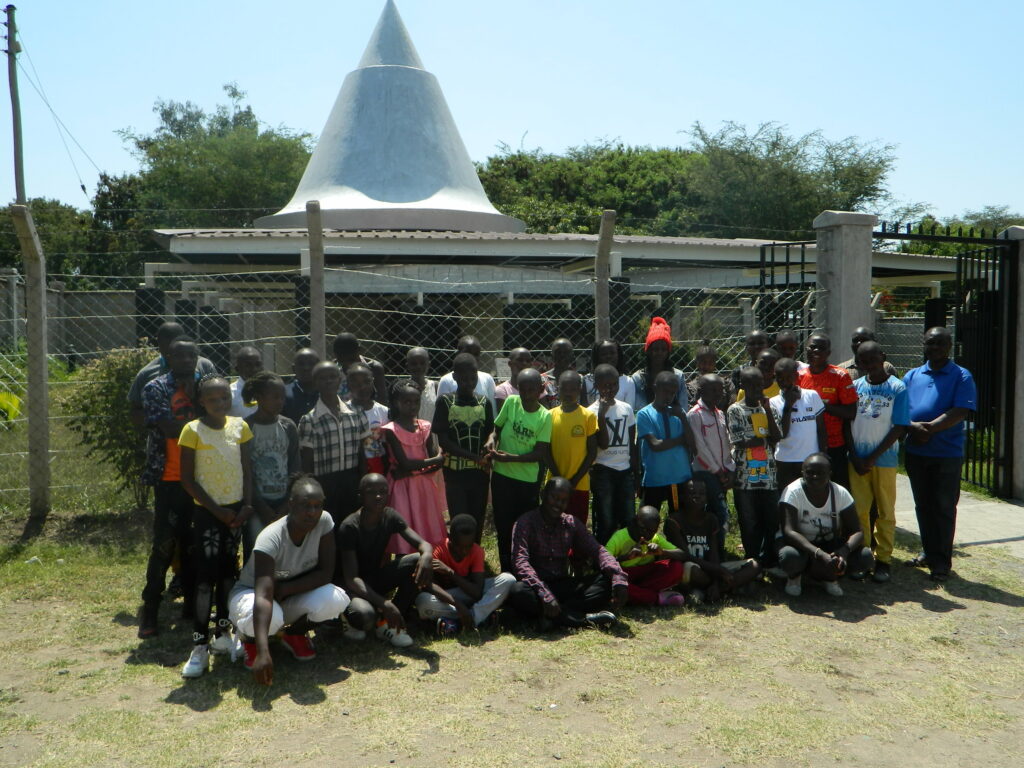
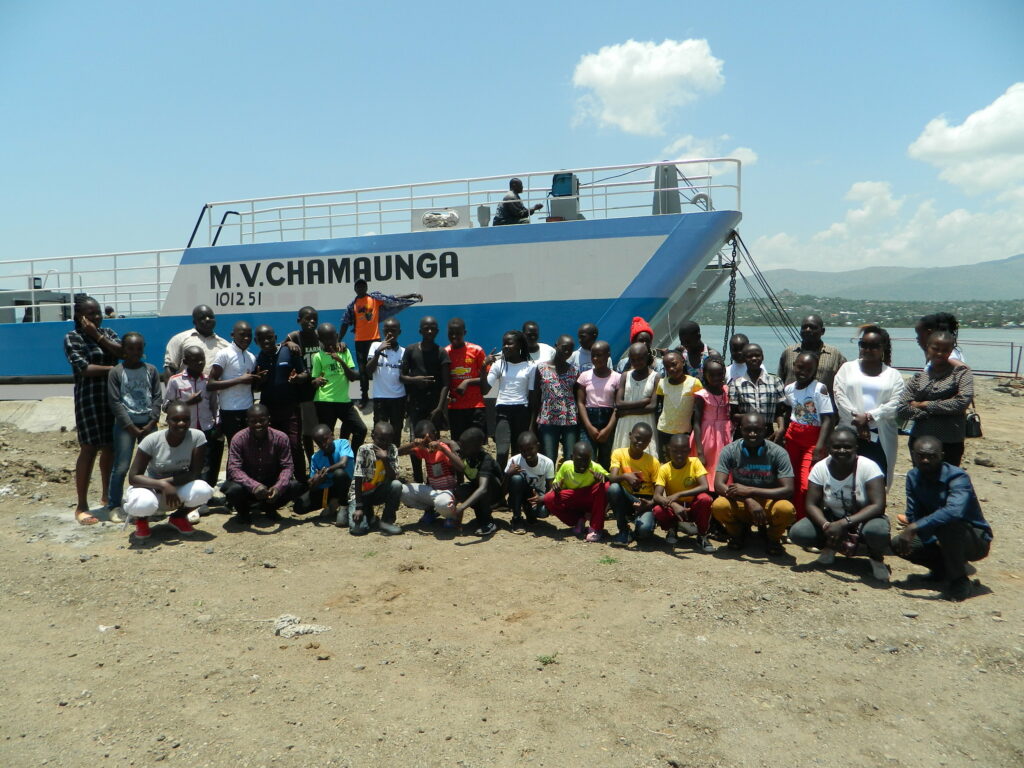
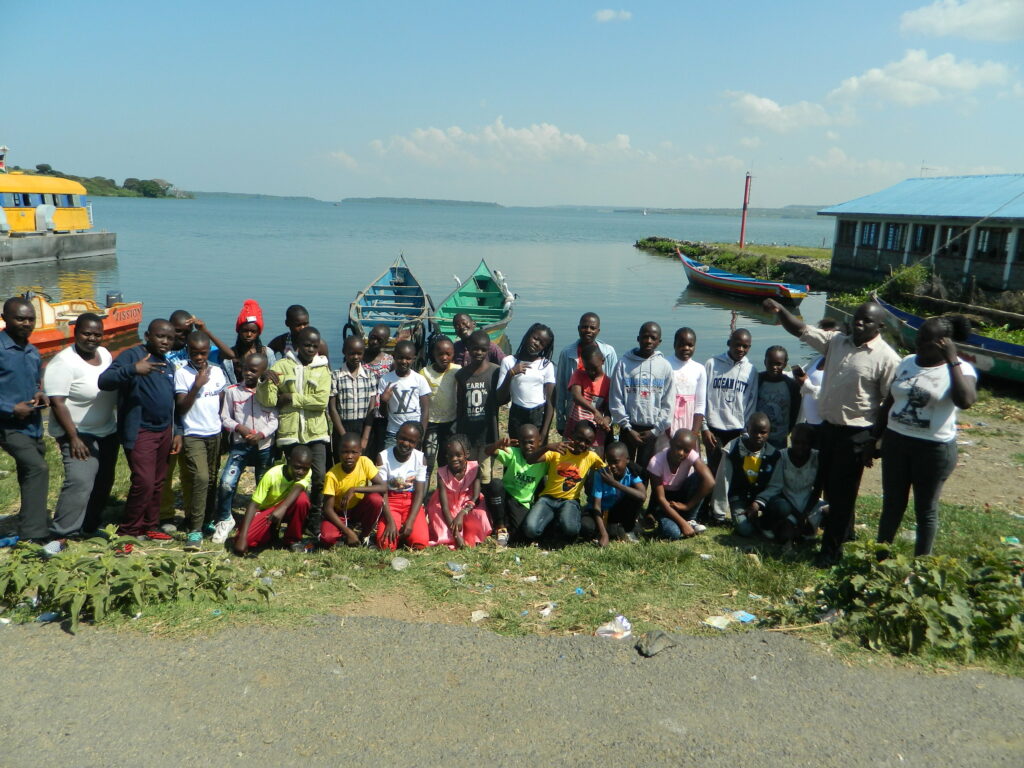
Kiplombe
Kijana students from grade 4, 6 and 7 visited Kembu camp in Njoro. Kembu means chameleon and it’s designed in the shape of a chameleon. Our students participated in a vast number of activities including hiking, archery, obstacle challenge, sheep shearing, horse watching, and locating hidden items game. Kembu provided experiential and adventure learning experiences. The three days spent in Kembu had a positive impact on our students. Education is truly an equalizer for all children, and Kijana strives to give equal opportunities for all students.
The art of camping is designed to discover that comfort and fun can be had without all the trappings of civilized life. The distillations of essentials down to only a few basic needs are all that is necessary. These kinds of discoveries play a key role in the development of the qualities and attributes that students will need to survive and thrive in a changing world. Therefore, they are playing an important part of the curriculum for all students at the school. Students can build these experiences up to develop comprehensive expedition skills, training, and preparation no matter what stage they are in their education.
Kembu provided us with a nice and safe field centre from which to base all experiences, from camping in the garden, to camping on a farm, in the woods, and eventually to go and hike on day expeditions through the forests of Mount Kiplombe. All these activities provided excellent opportunities to help students learn how to look after themselves, make sound judgments and decisions and take responsibility for their actions, allow students to experience a greater level of self-awareness and concentration as well as awareness of others and the environment around them. It allows students to learn about how they personally react, behave, and cope when things become uncomfortable, difficult or challenging.
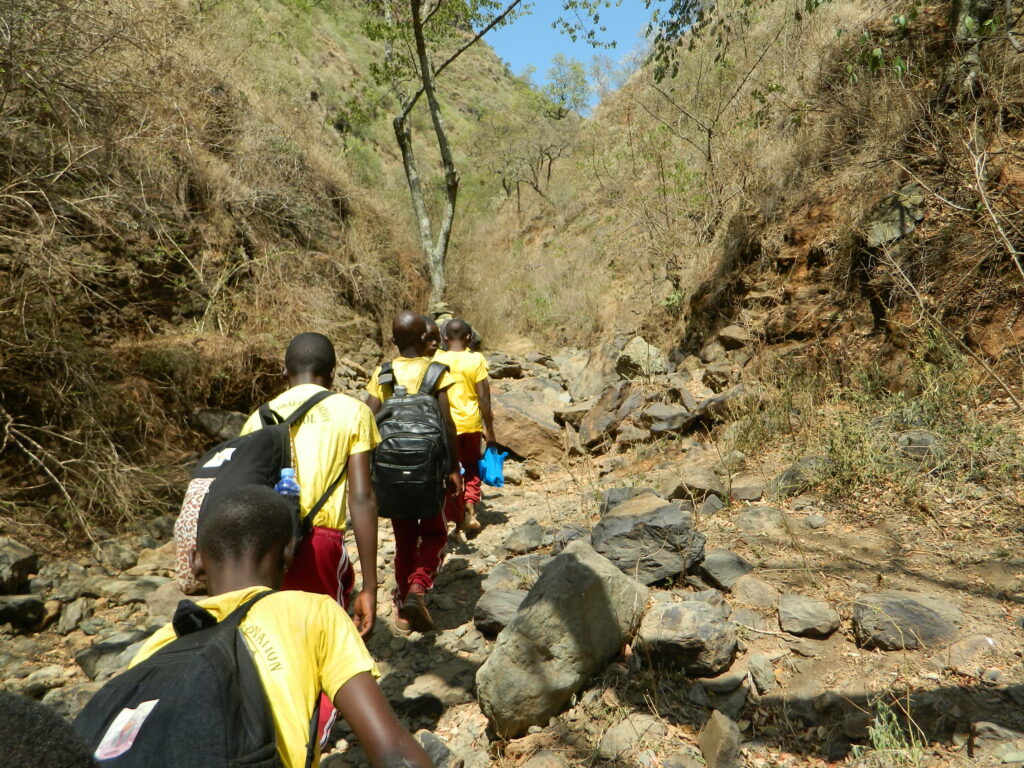

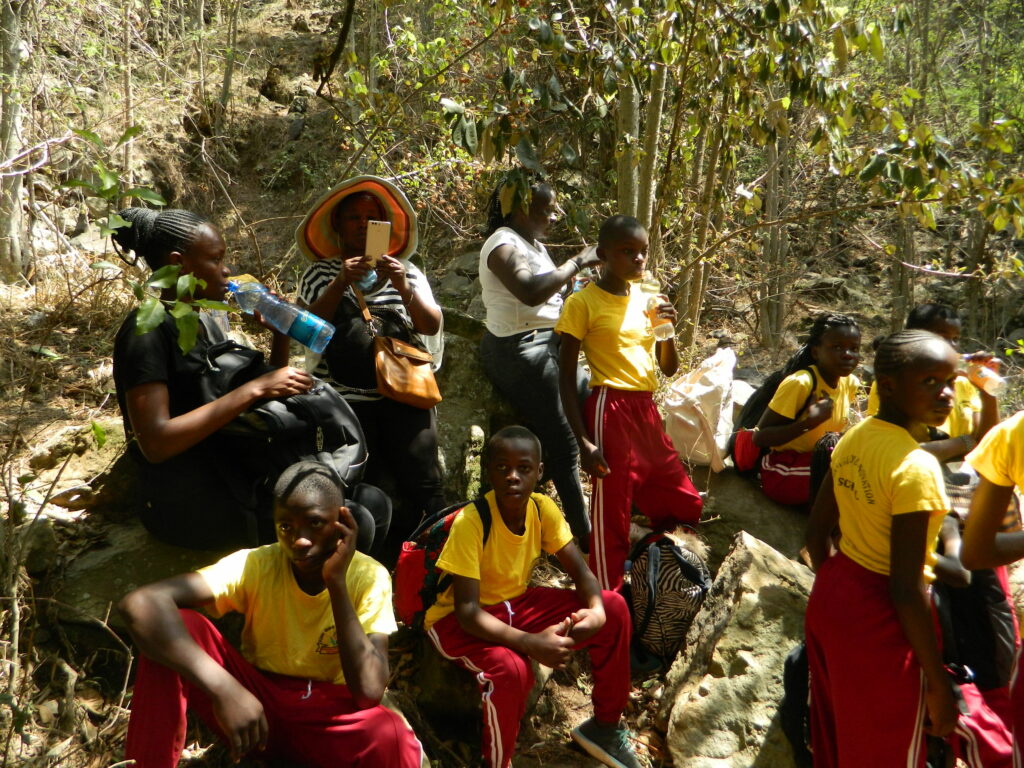
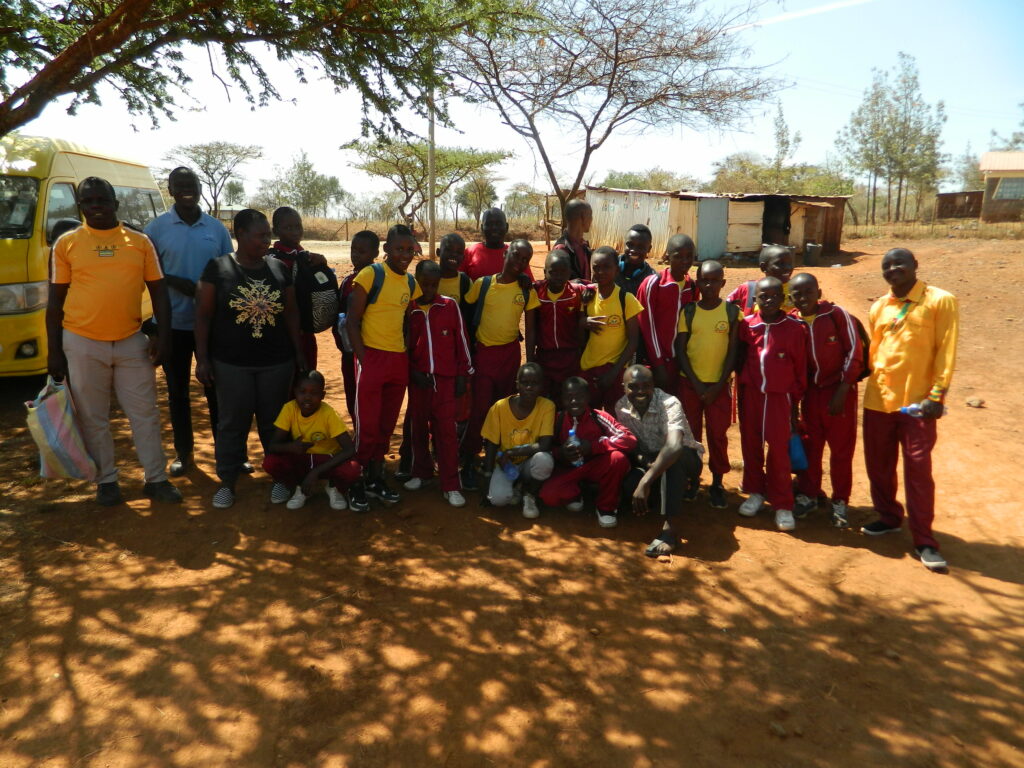


Masai Mara Park
During the April holiday break, students from Grades 4, 5, 6 and 7 traveled to Masai Mara Park. Kijana acquired the services of the Maa Tour Company that drove us throughout the park. Masai Mara is one of the best wildlife destinations in Kenya and Africa to explore. It is a premier conservation area where wild animals and their ecosystem exist in a highly protected environment. Our students were able to spot the big five wildlife attractions in the park; lion, leopard, elephant, African buffalo and rhino. They also saw hundreds of animal and bird species that inhabit the reserve. For most of our students, it was their first time interacting with the park and seeing a myriad of animal species.
Masai Mara is known for the great annual migration of wildebeest that occurs from July to October. It attracts large herds of over one million wildebeest to the area. The migration of wildebeests always takes place from the northern part of Serengeti National Park located in Tanzania to the Mara River. The perilous crossing is an iconic migration that captures the attention of many wildlife enthusiasts the world over. Our students may have missed the migration, but they saw most of the animals in the park.
The exploratory trip was for 11 days, with three days happening within Masai Mara Park. Prior to leaving, students visited a Masai village to learn about their cultural aspects and their way of living. Masai people are known for their unique dances, characterized by rhythmic jumping and chanting. Kijana students joined and emulated their dances. It was a fun and interactive way for students to experience firsthand a traditional Masai dance.
Masai beadwork is renowned for vibrant colors and intricate designs that attracted our students to acquire beading skills. Students where able to observe skilled Masai artisans at work and gained awareness of the cultural significance behind different bead patterns, cultural talks, and storytelling These sessions provided students with an opportunity to gain insights into Masai history, beliefs, and values, which fosters a deep cultural appreciation.
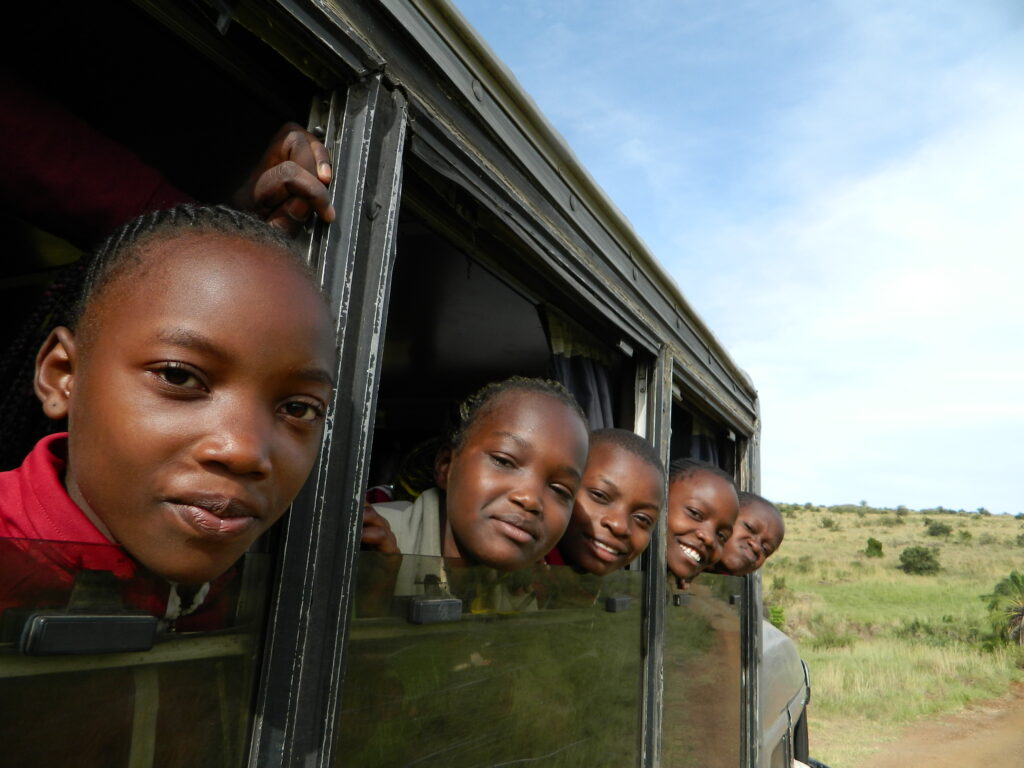
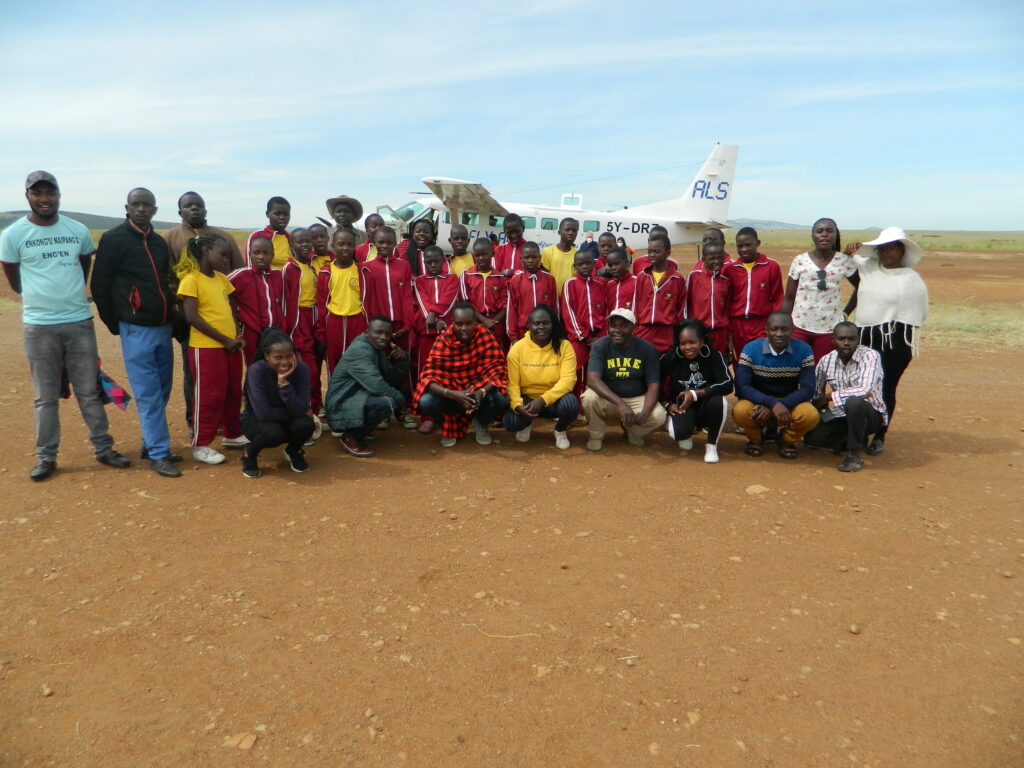

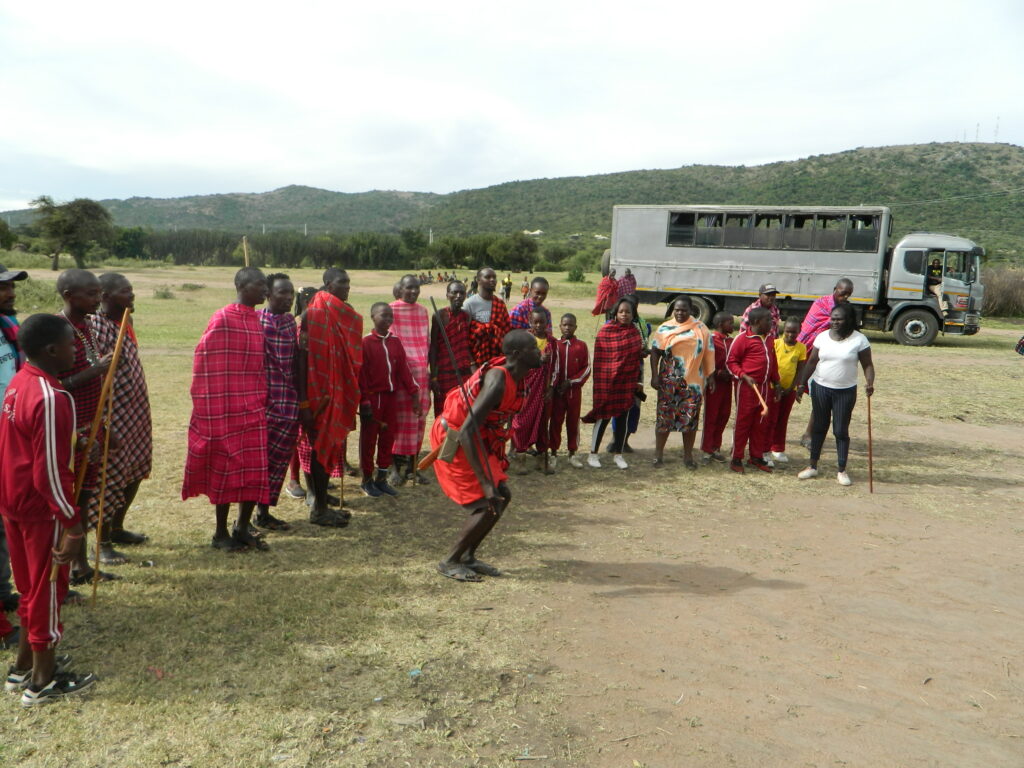
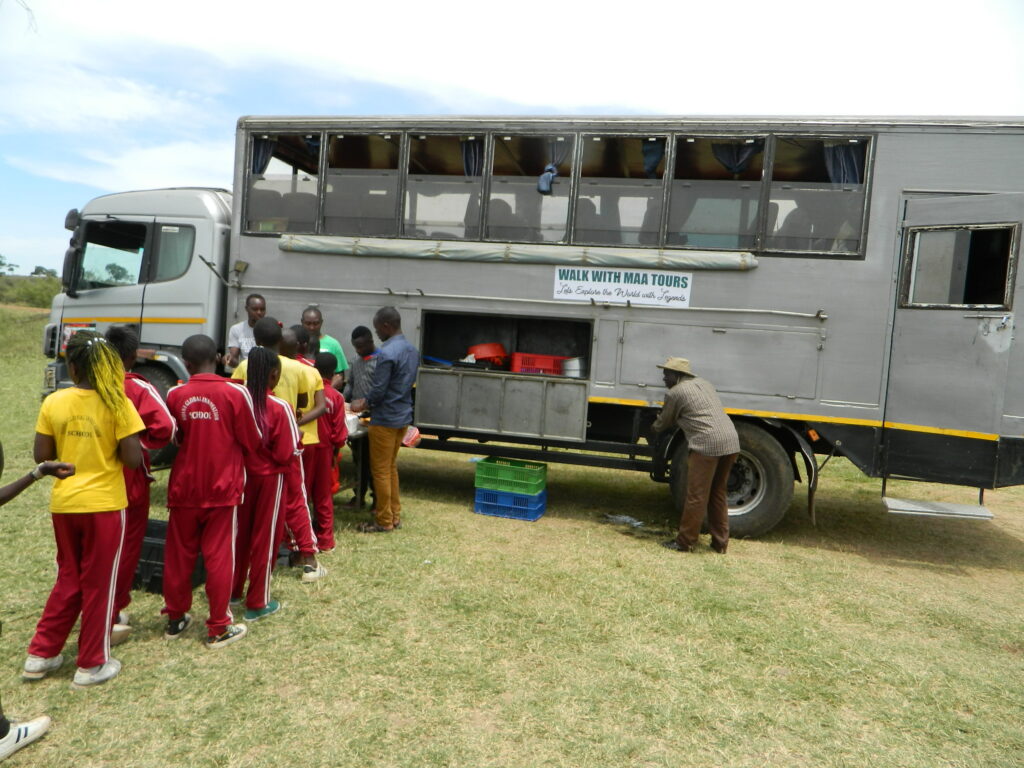

Nairobi National Park
Nairobi is the capital city of Kenya and serves as the hub for many businesses. It plays a critical role in preserving Kenya’s heritage and culture. Kenya is a country recognized for its endless list of tourist attractions and museums. In April 2022, 41 students from grades 4 through 8 and 12 adult chaperones from the Kijana Global Innovation School ventured to the nation’s capital. The group visited amazing destinations; Nairobi National Museum, Bomas of Kenya, Kitengela Hot Glass by Anselm, and Kenya International Conference Center (KICC). Nairobi gathers diverse cultures, African cuisine, and all tribes of Kenya into one vibrant city with som much to see.
The Nairobi National Museum was the first destination for the group. Museums are places of discovery, contemplation, and learning. The Institution of National Museums of Kenya is anchored by four notable pillars; culture, history, arts, and nature. While there, students got the opportunity to learn more about national heroes who were freedom fighters in Kenya’s independence movement.
The museum had a positive impact on our students. They were helped to understand sustainable use of natural and cultural heritage by enhancing access to the museum’s collection, research, and exhibitions in fulfilling this mandate. Many students expressed that the experience was fun and one they will remember their entire life. For most students it was their first experience to travel beyond their home village and county to experience big city life.
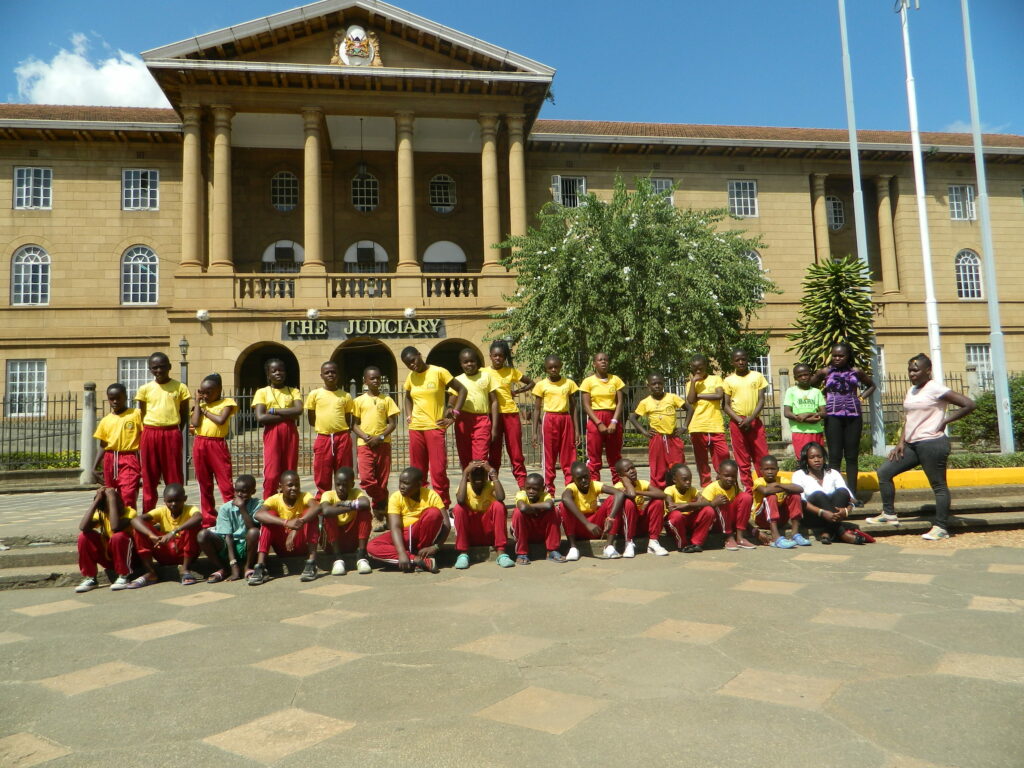
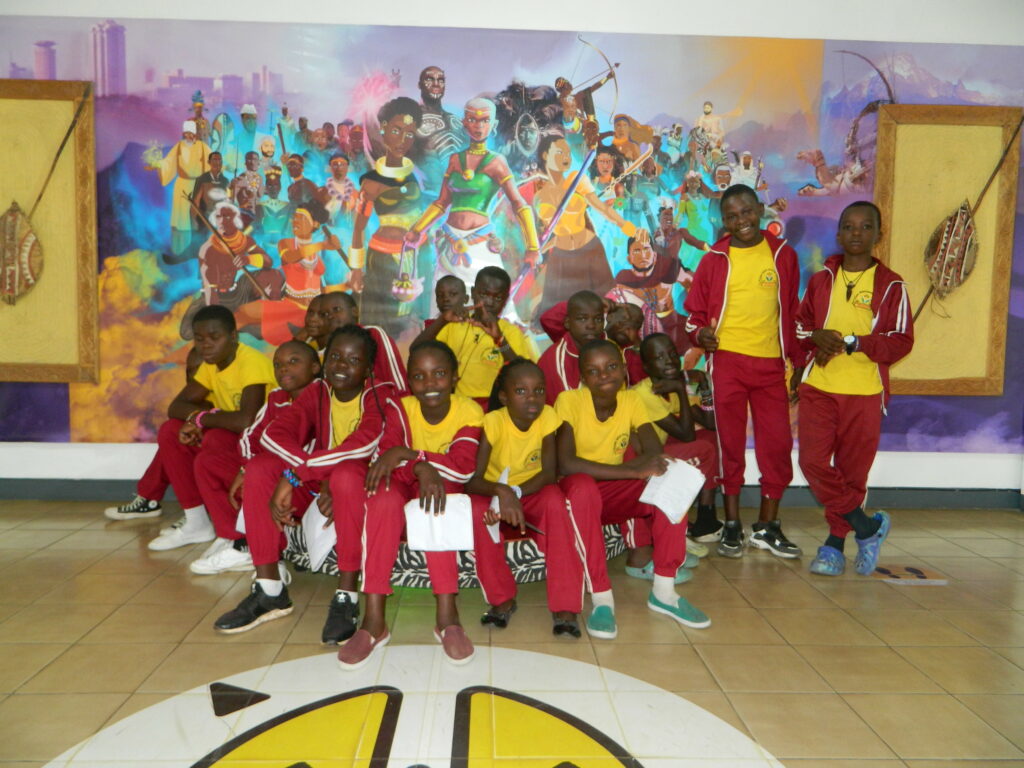

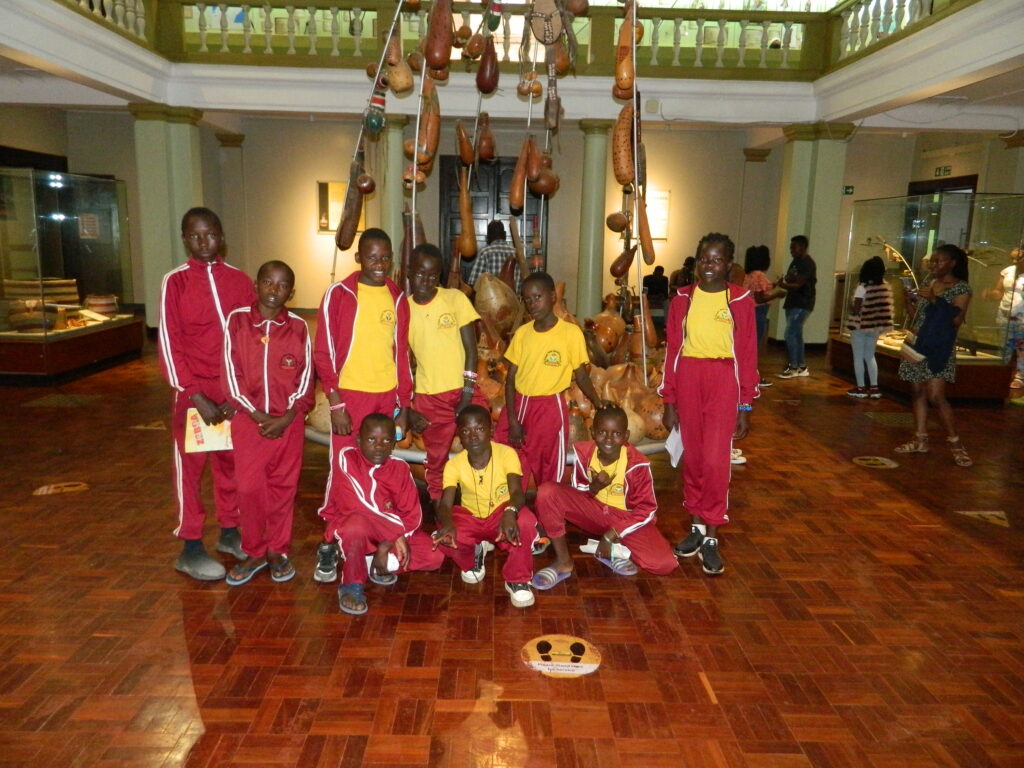
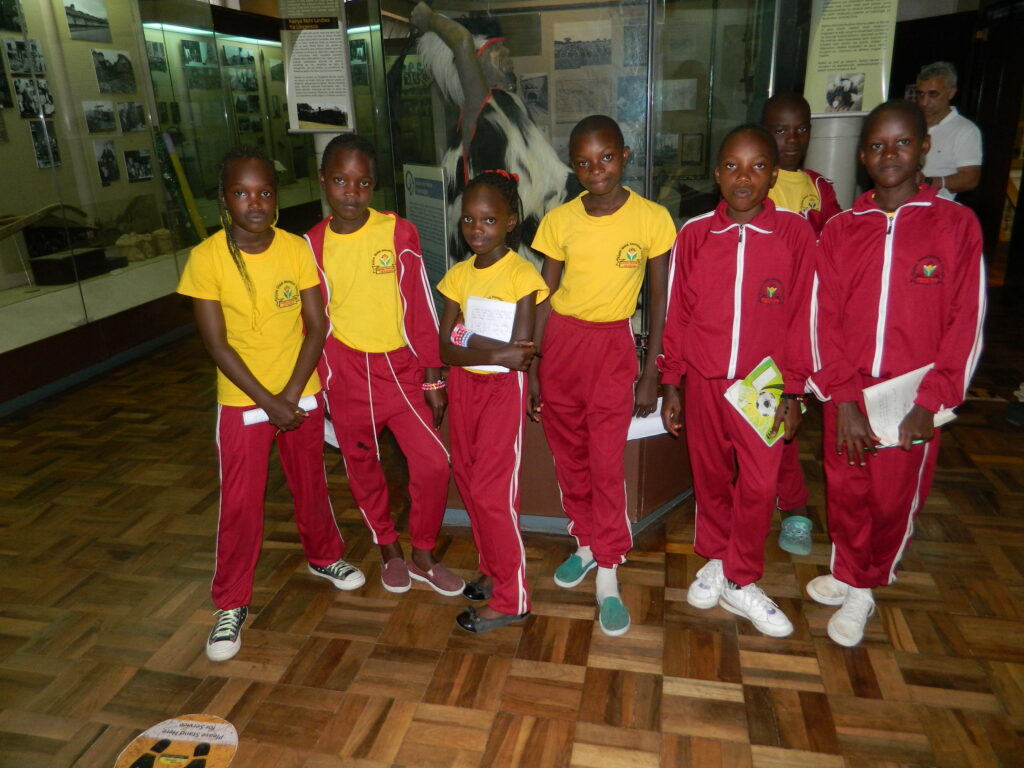
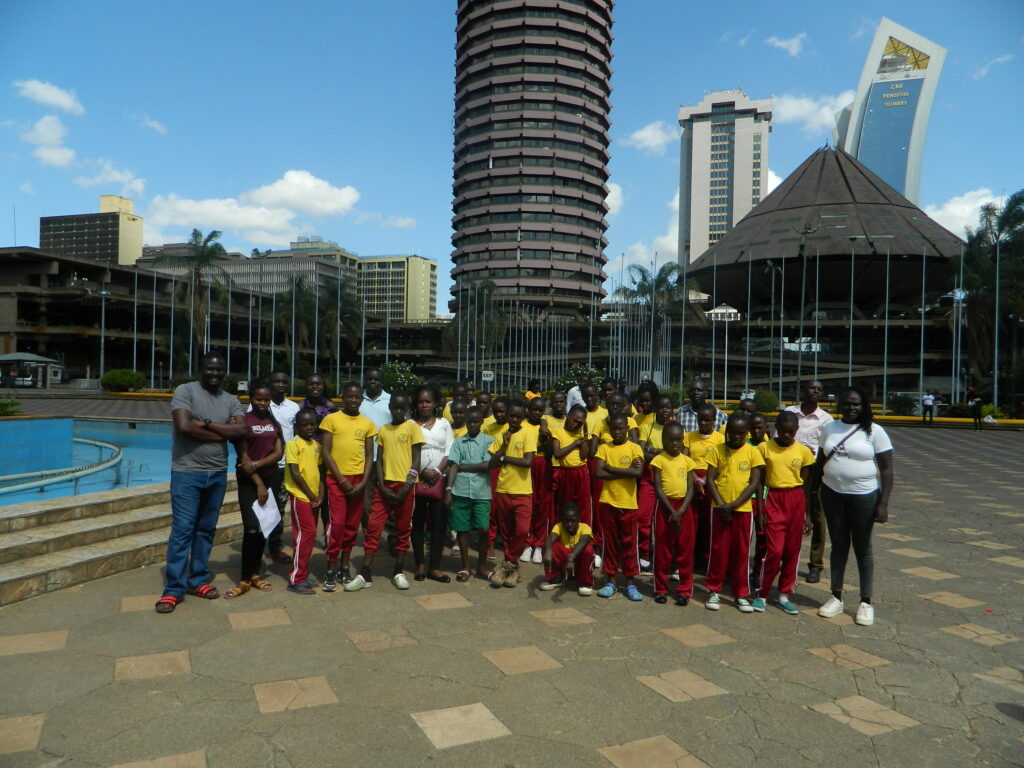
2023 Student Exploratory Trips
Rusinga Island
Since the start of the exploratory trips in 2022, Care, Share, and Explore teams comprised of students and faculty have made several trips to Rusinga Island. After a ferry ride on Lake Victoria, students began their 3 day stay at Wayando Eco Lodge. The resort is an environmentally friendly that practices and teaches permaculture and organic farming, which was a wonderful learning experience for our students. Some of our students come from vulnerable families, so permaculture training and organic gardening gives them tools to farm smart while yielding more food for their families.
The trip also allowed students to develop camping skills and a chance to interact with nature. The serenity of Wayando Eco lodge is just beautiful and you can’t miss bird watching. On day one, students engaged in several activities that made the trip interesting. Team building and playing on the swings was fun, whil they waited to be served a luo staple, fish. In fact, fishing techniques was taught during their stay.
Students will always remeber their visit to Ruma National Park, located near Wayondo Eco Lodge. It is the only park with Roan antelopes. Interaction with the Roan antelopes is a unique feature that attracts hoardes of visitors from all over the world throughout the year.
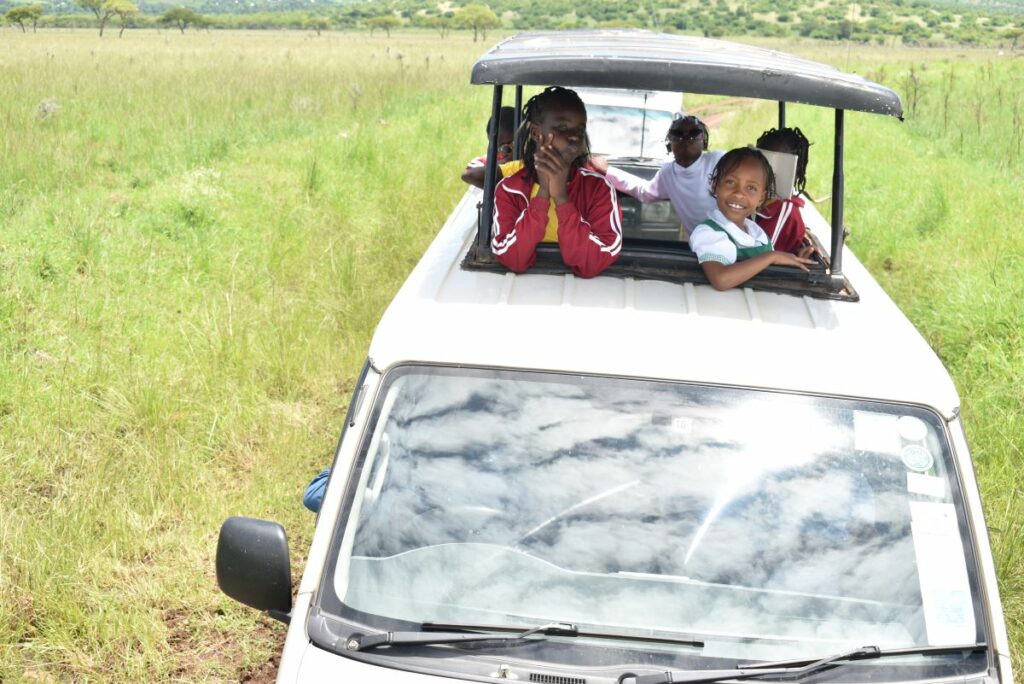

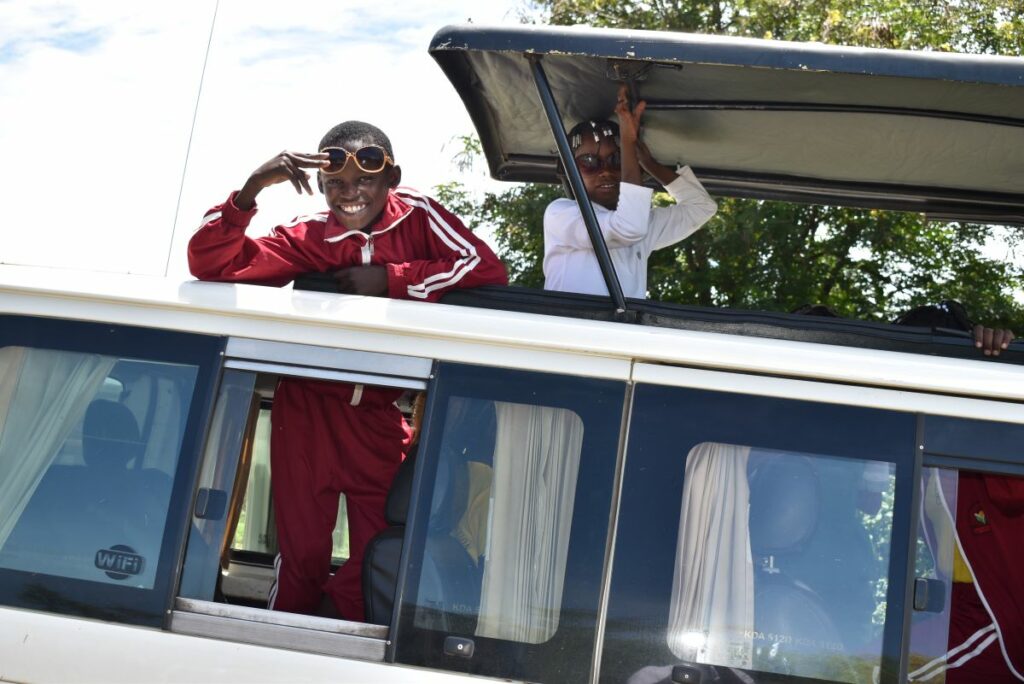
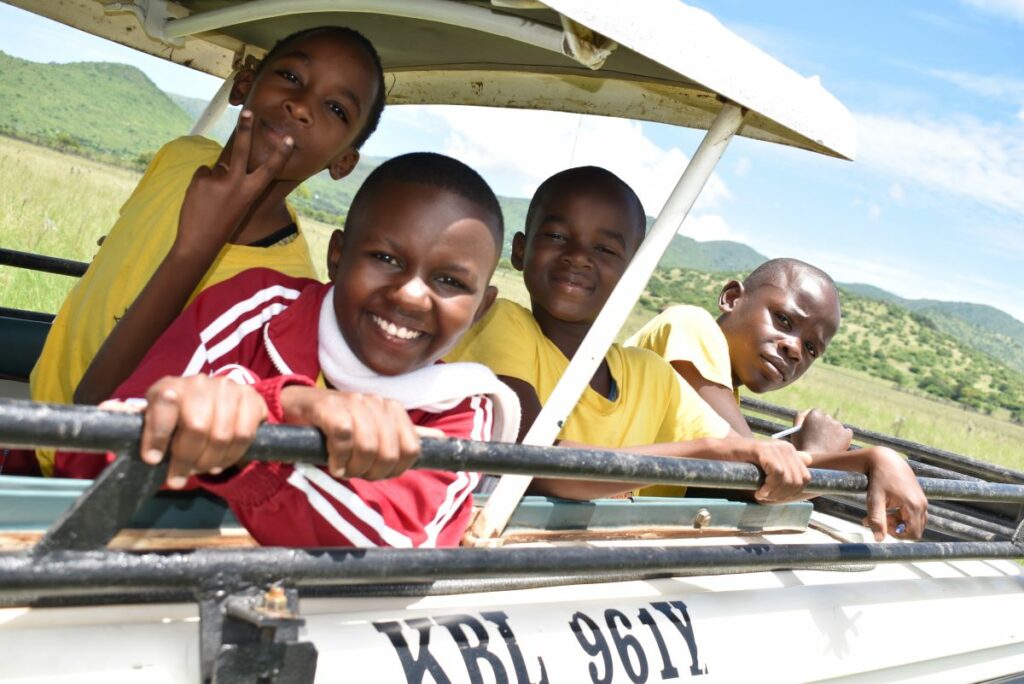
Nakuru
Kenya is a beautiful country with amazing people. Our students are exploring it through the continuing “Care, Share, and Explore” Program. Kenyan schools were closed in August for a two-week break and we took advantage of the time by taking 3rd through 8th grade students and many of out teachers on another exploratory expedition. Students hiked in Mount Longonot National Park, visited Lord Egerton Castle, explored geology at the Kariandusi Diatomite mines, participated in team building activities, shared stories over campfires, went swimming and gained first-hand knowledge of Kenya.
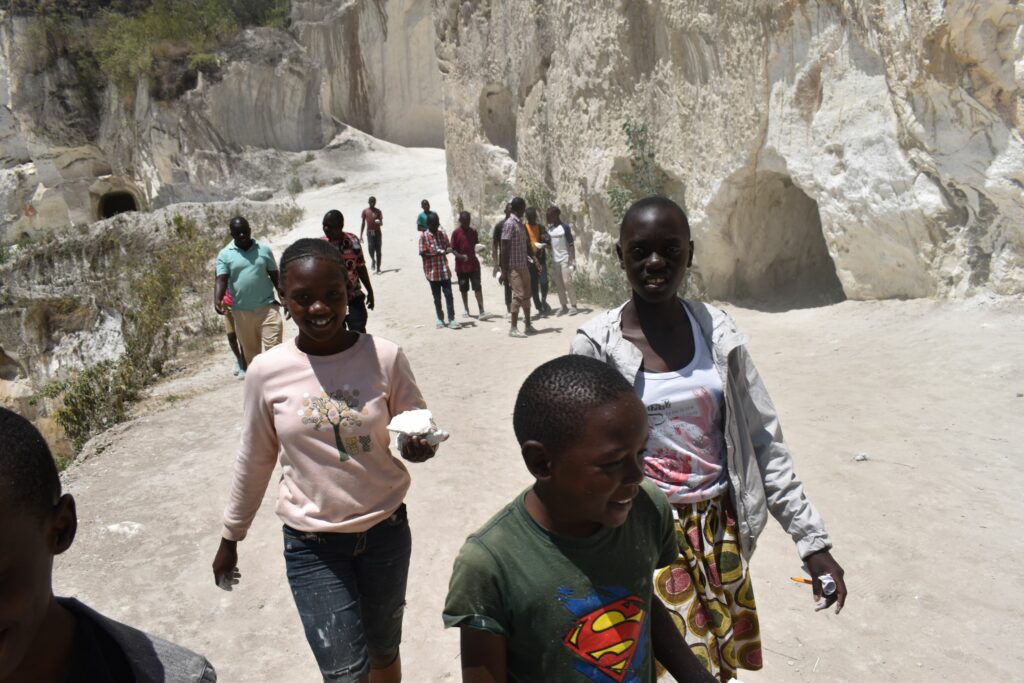
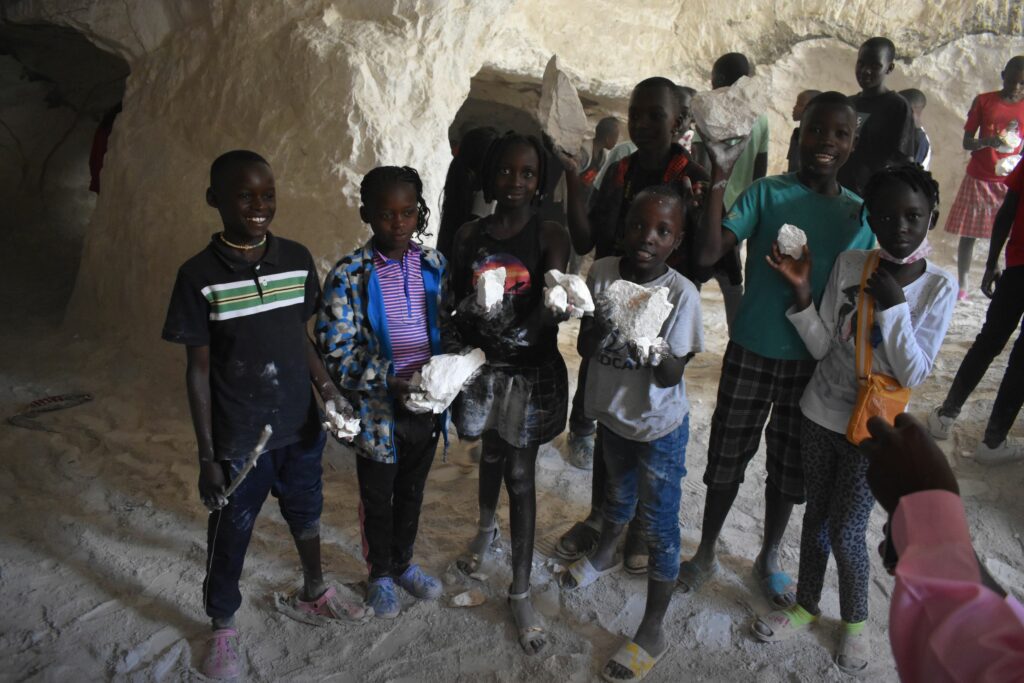
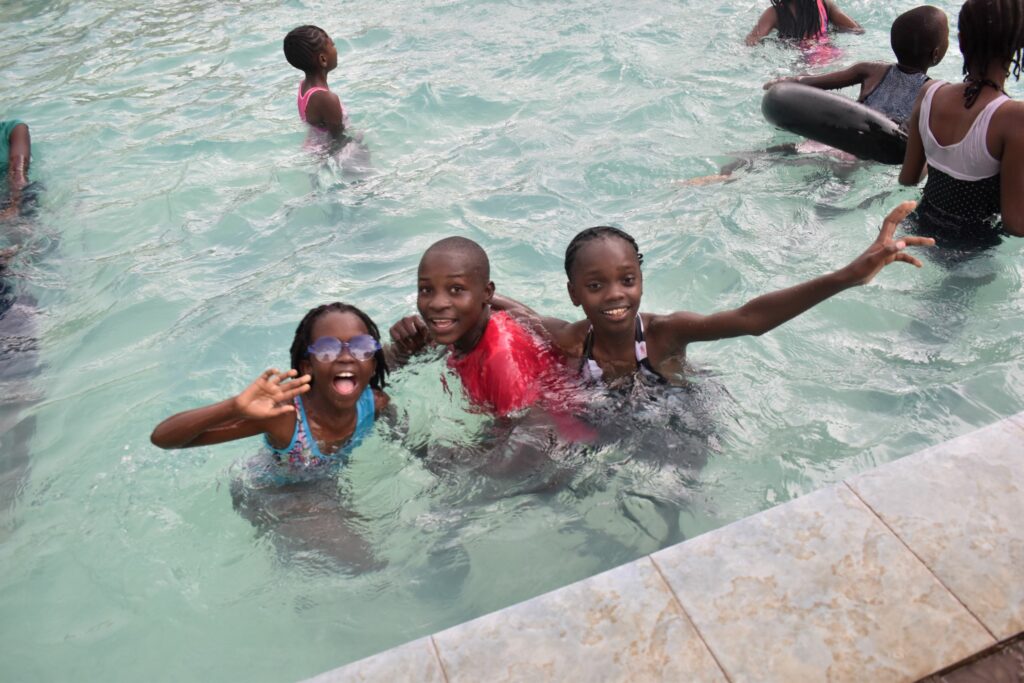


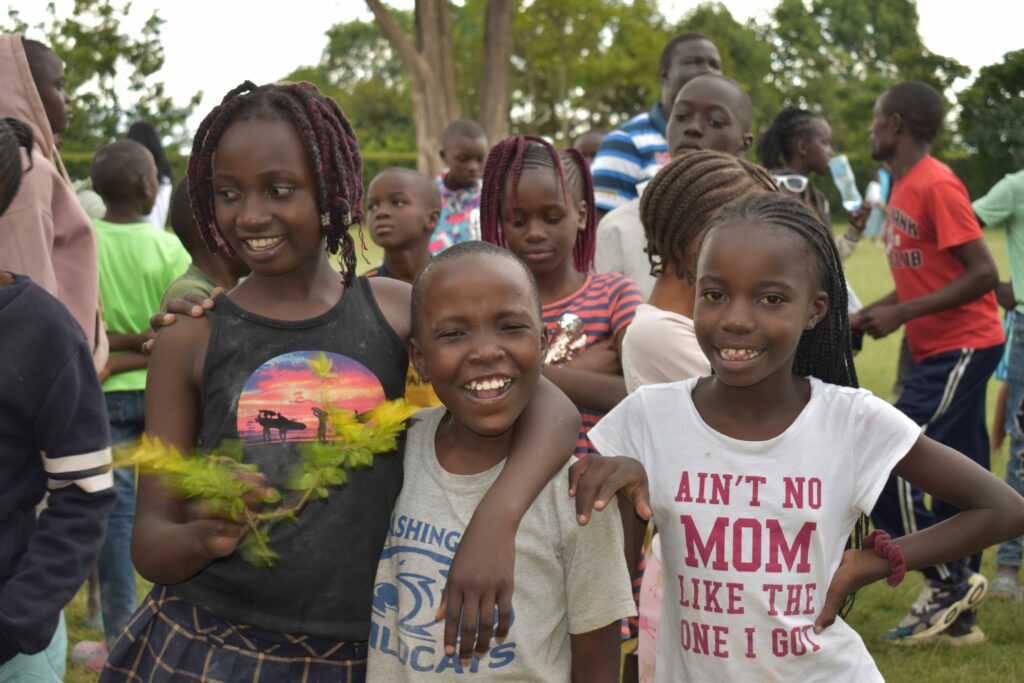

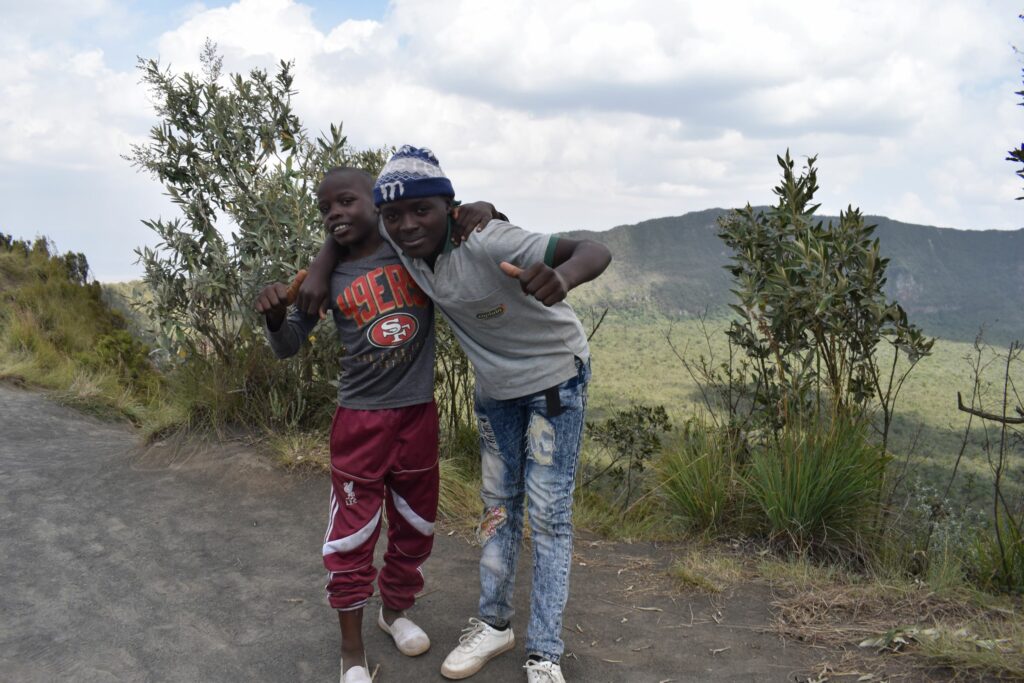
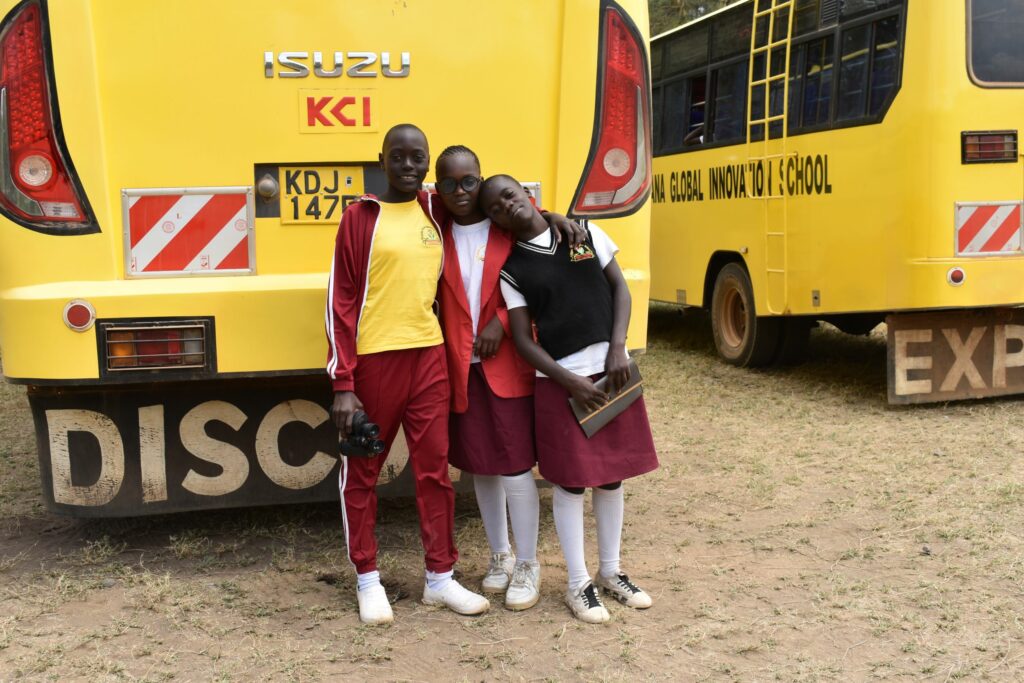
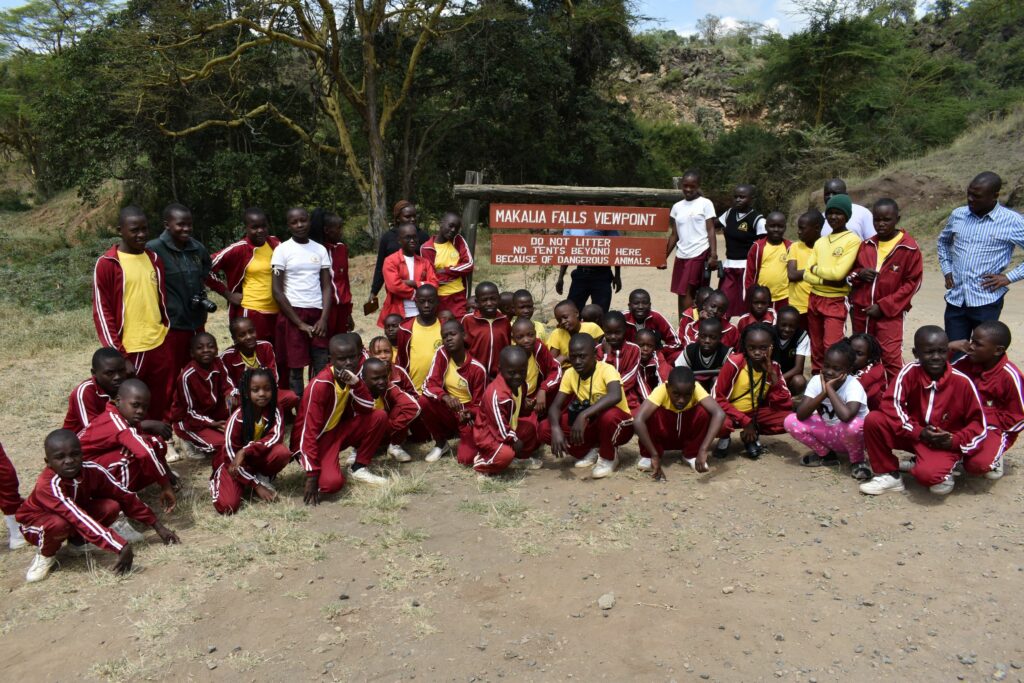
Program
Tree Seedling Effort
This year’s (2023) goal of raising 1 million tree seedlings kicked off at the Global Innovation School by establishing a pilot seedbed. Kijana’s Care, Share and Explore team led by Anita Achieng, Linda Shiroya, Prideluck Obaga, Lawrence Inonda and two teachers Mathews Were and Brigit Mbaria worked with the school’s Environmental Club to plant tree seeds.
Seeds planted in seedbeds at the Global Innovation School were cypress, casuarina, moringa and acacia.
19 kilogras of seeds were purchased for the project. In addition, the entire team also visited 5 nearby schools; Buchenya Girl’s Secondary School, Shiraha Primary School, Eshirumba Primary School, Bulluwe Primary School, and Ibokolo Primary School.
I think there are 12 schools participating now?
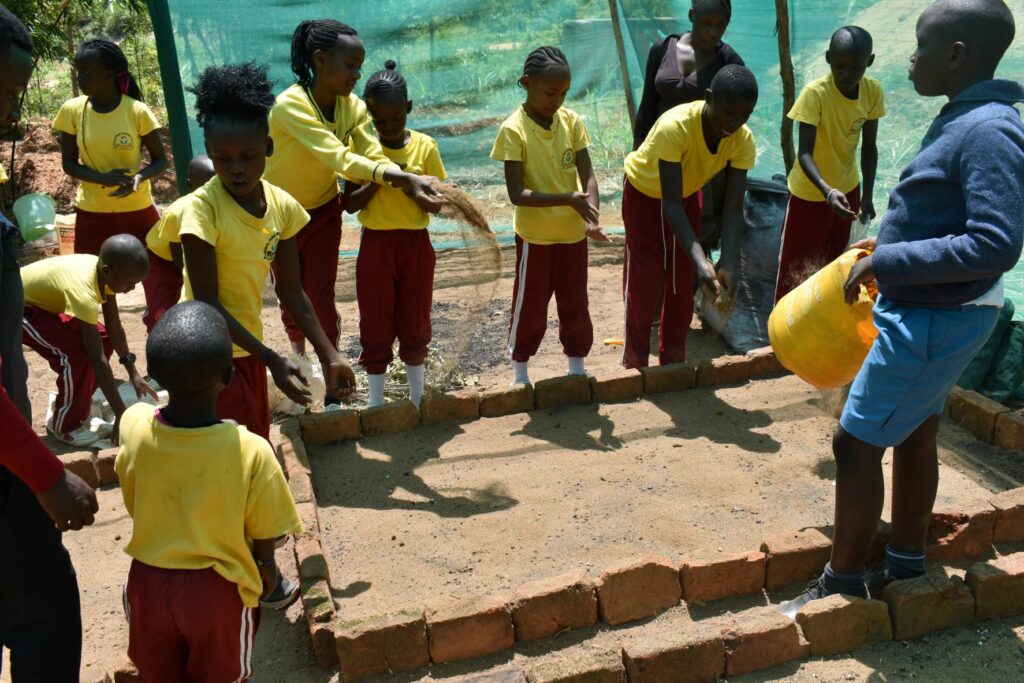
2022
Uhuru Boys Boarding Secondary School - Nairobi
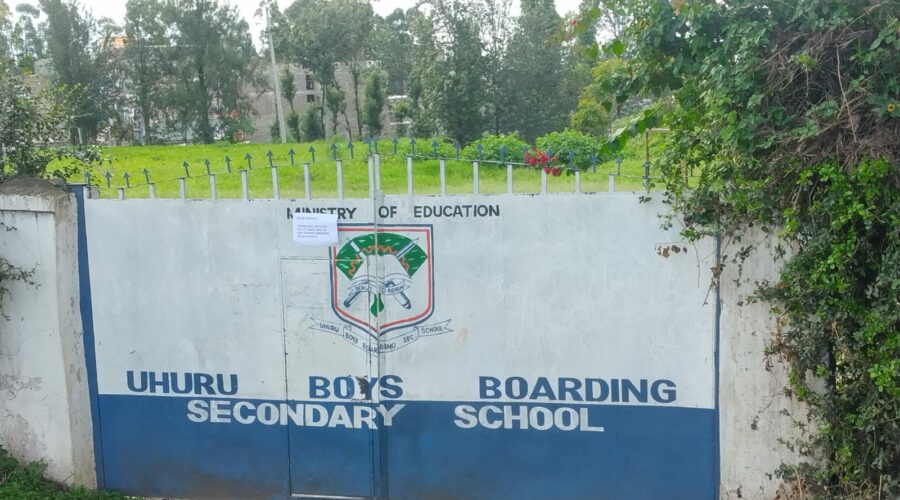
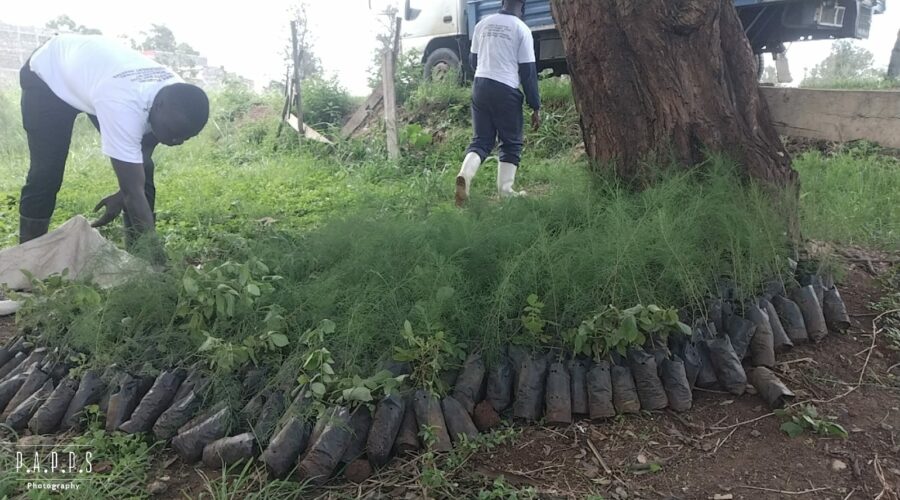


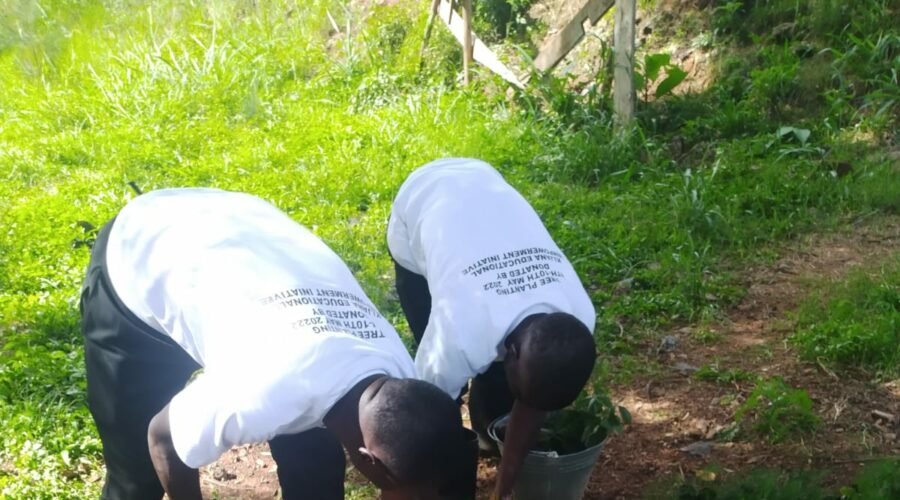
2023
need school name here
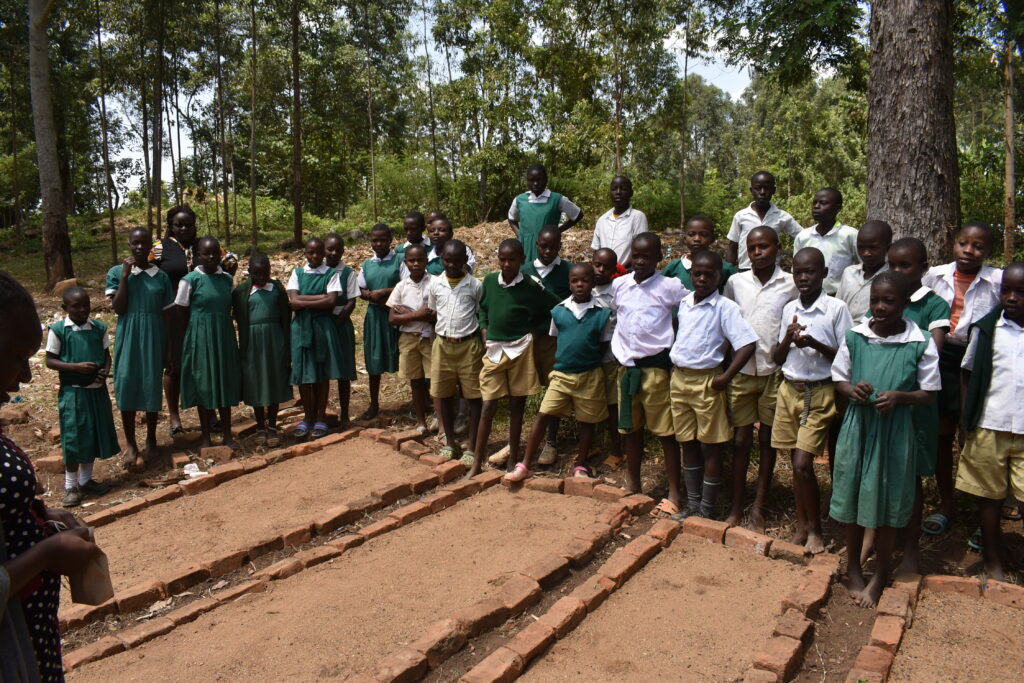
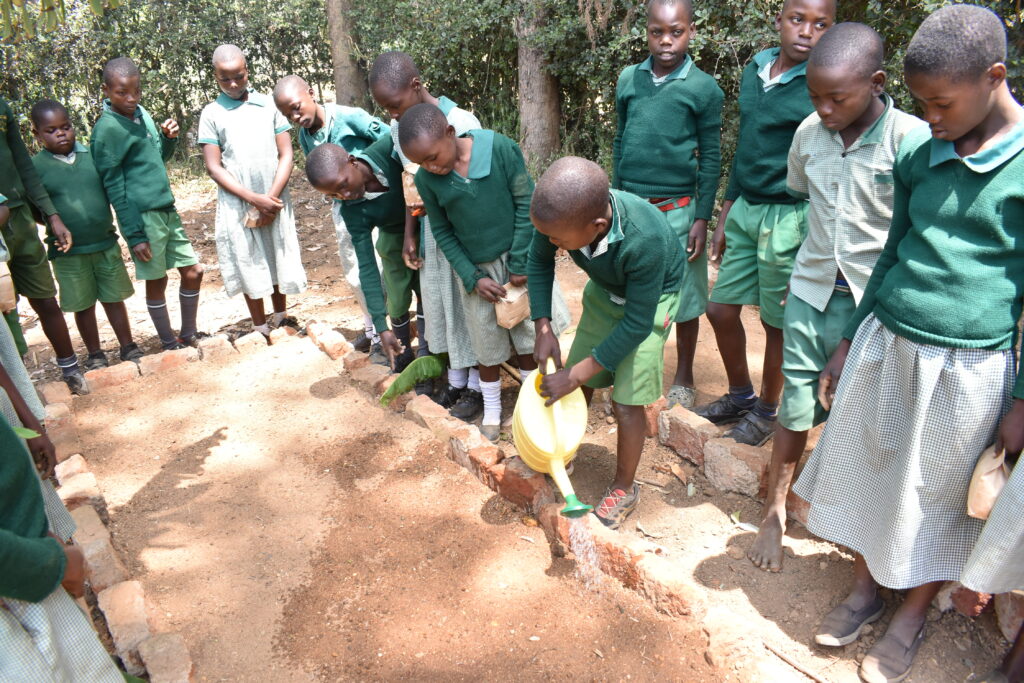
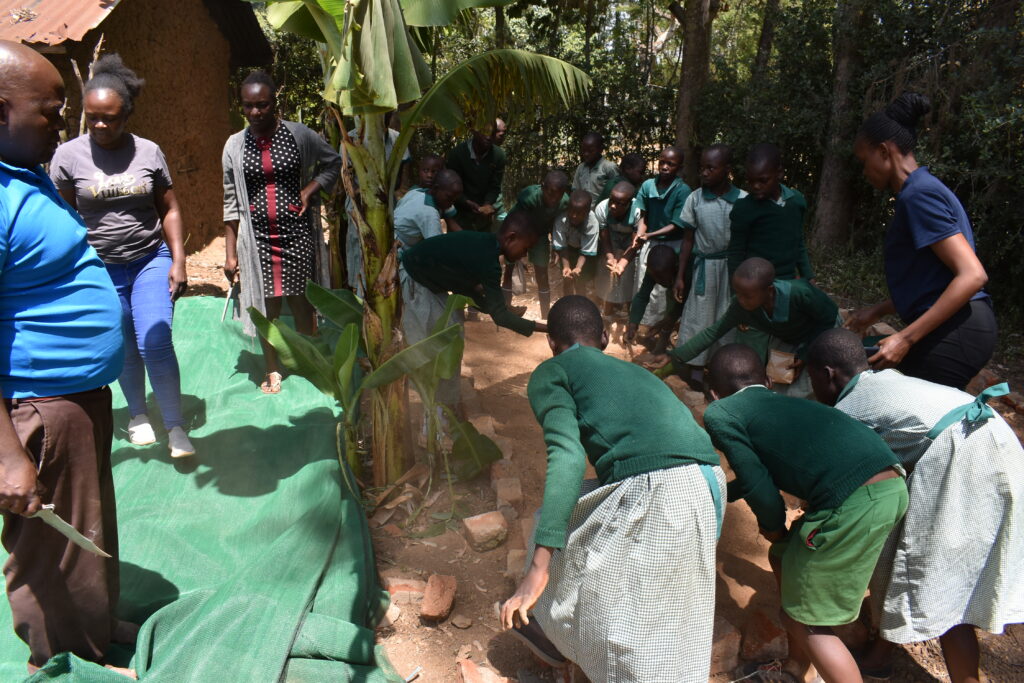
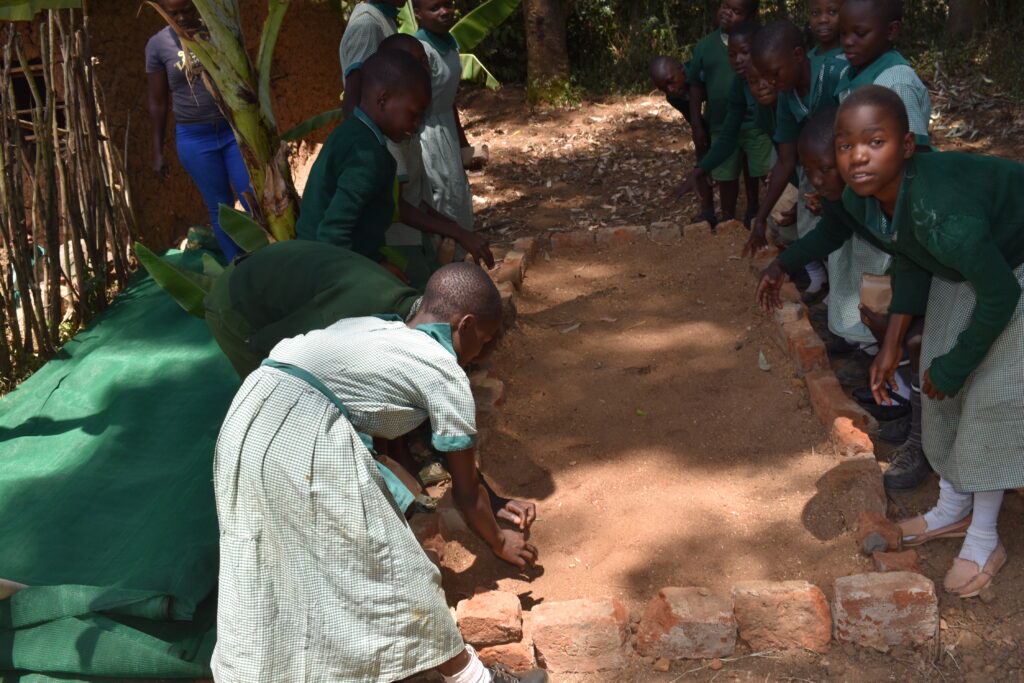
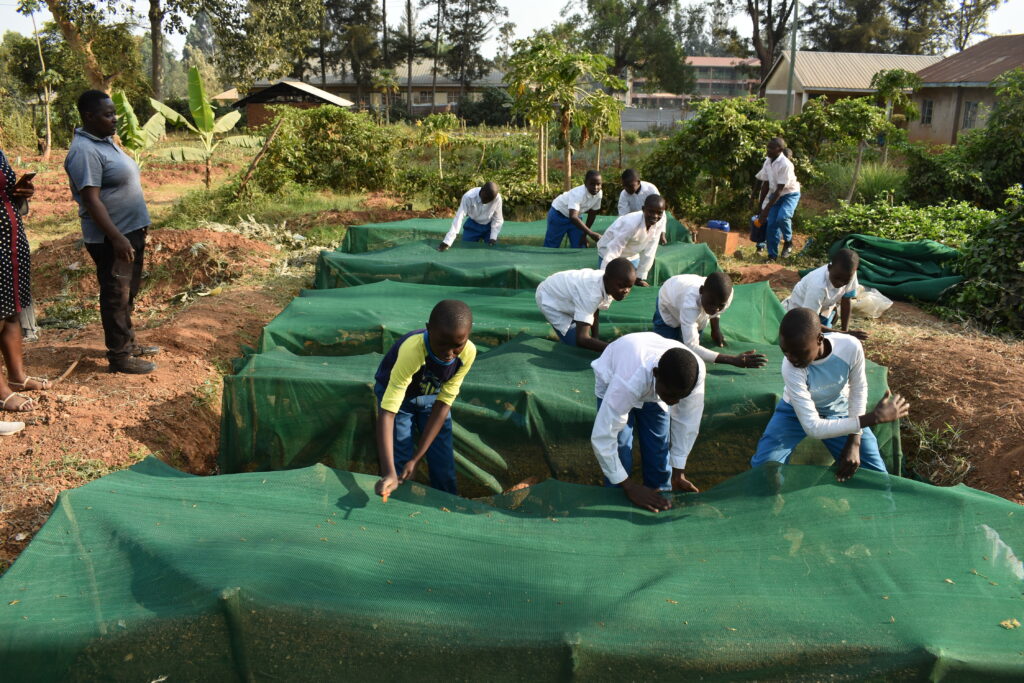
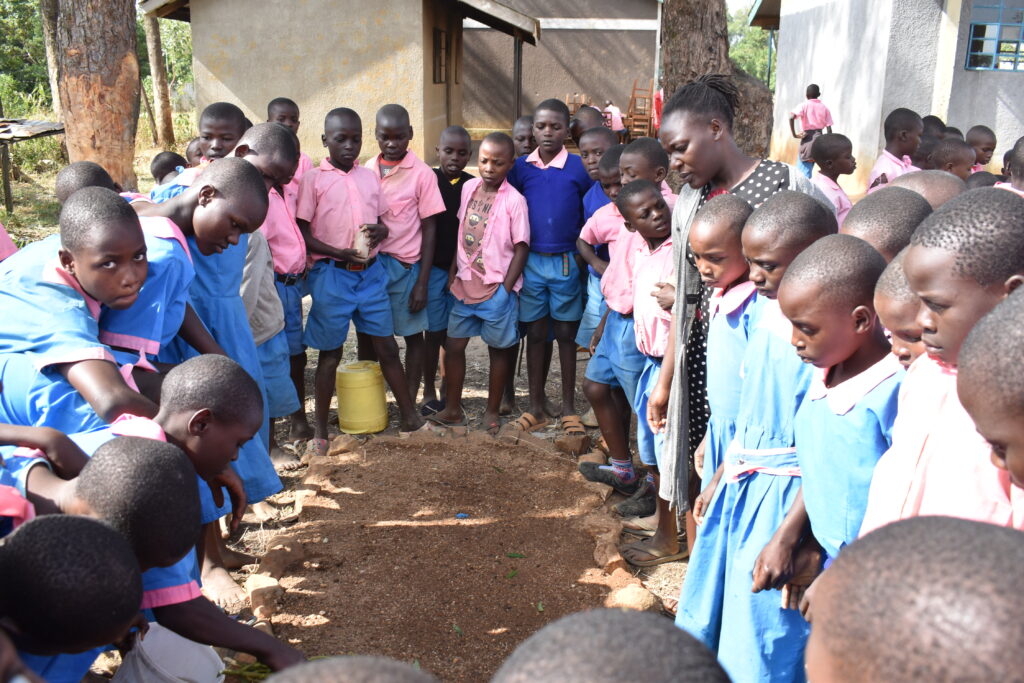
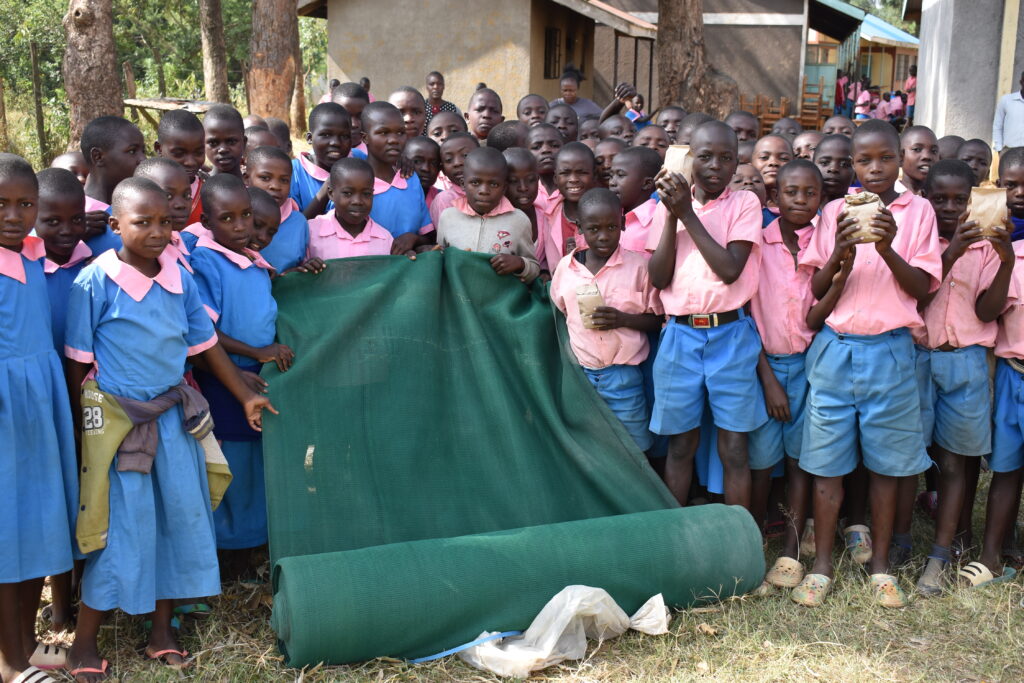
Nyadero Primary School

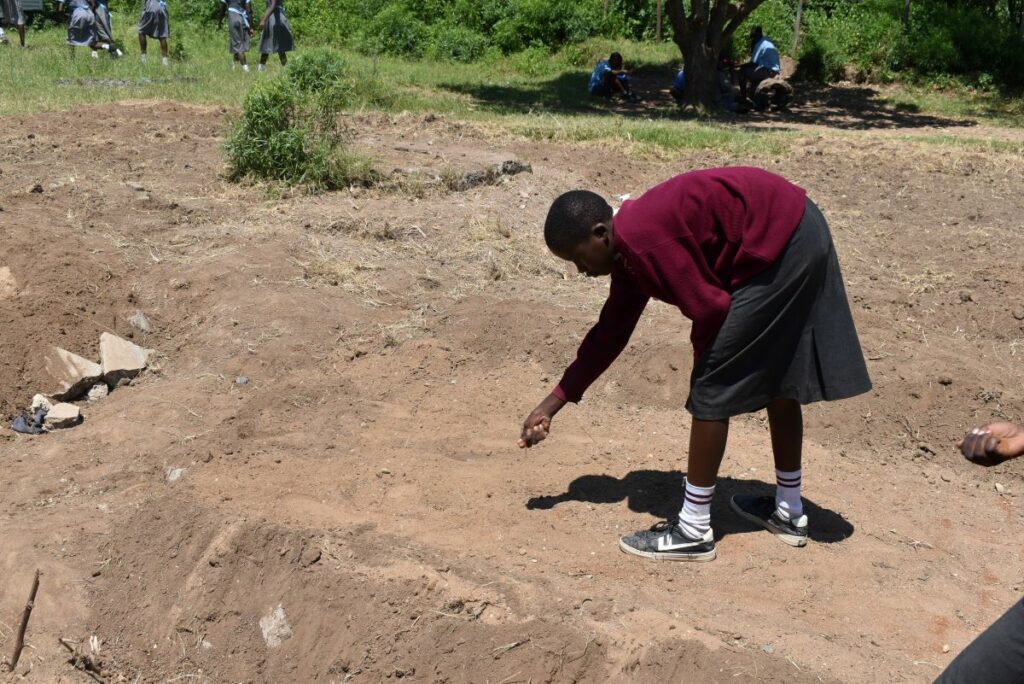
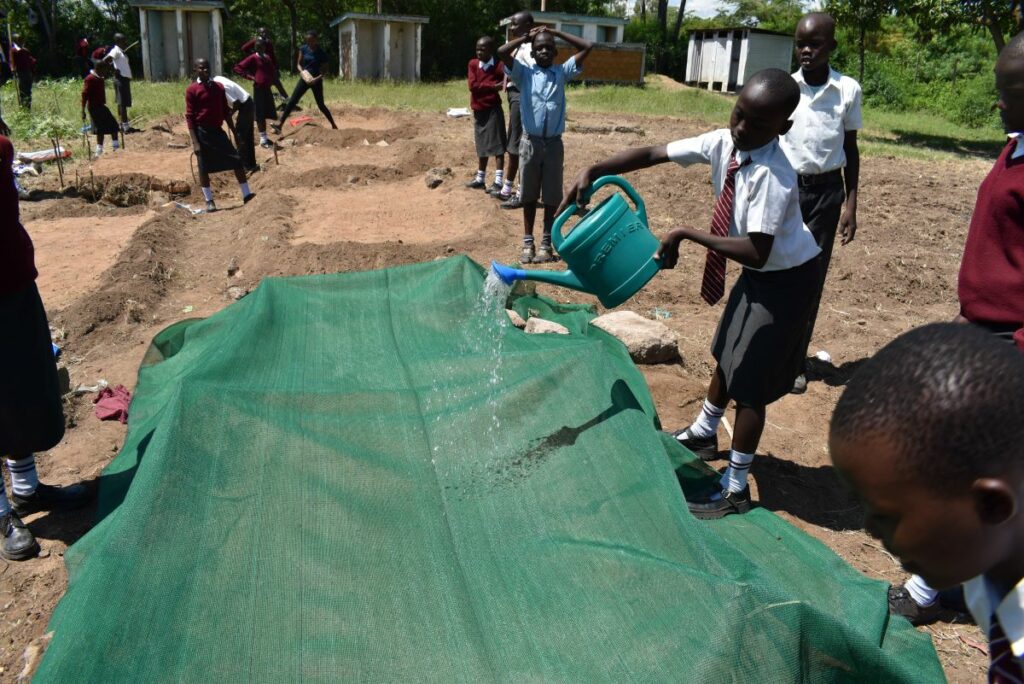
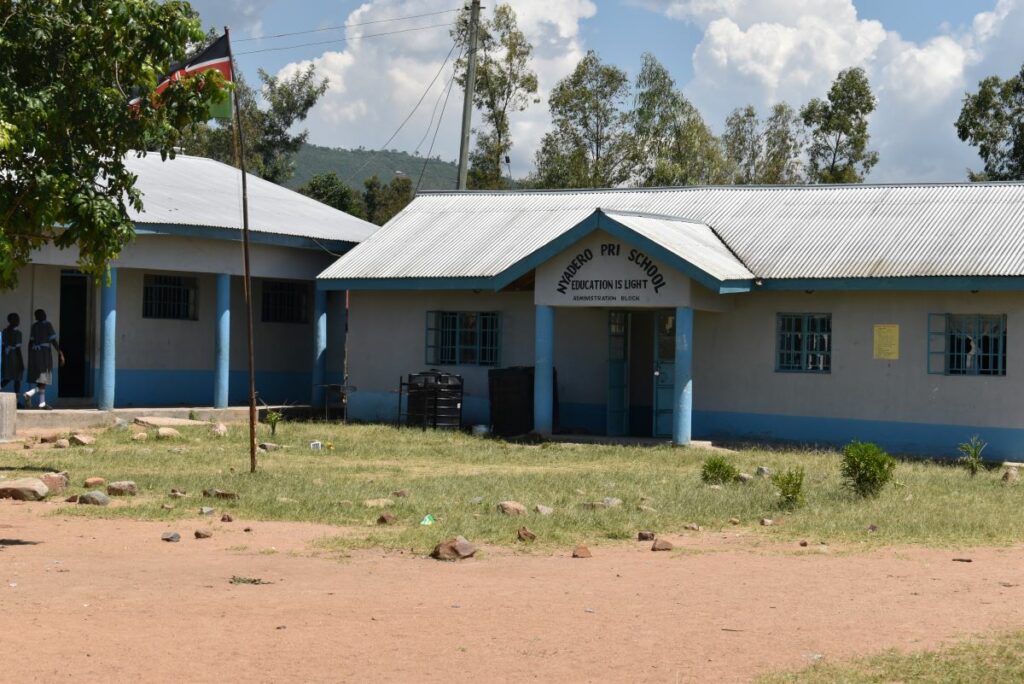
Nyalunya Primary School
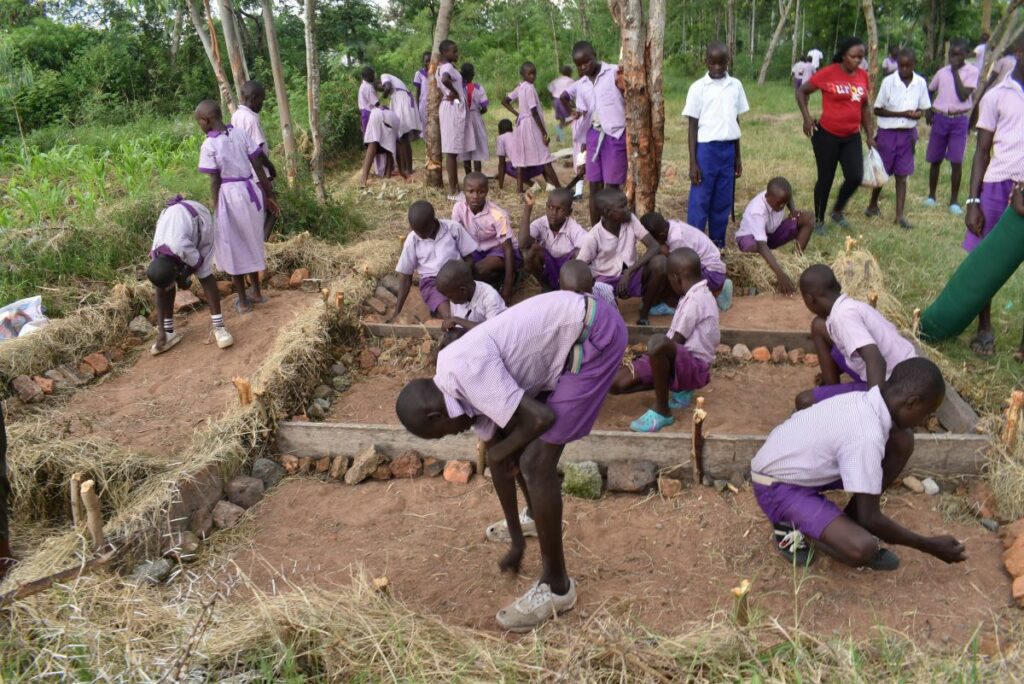
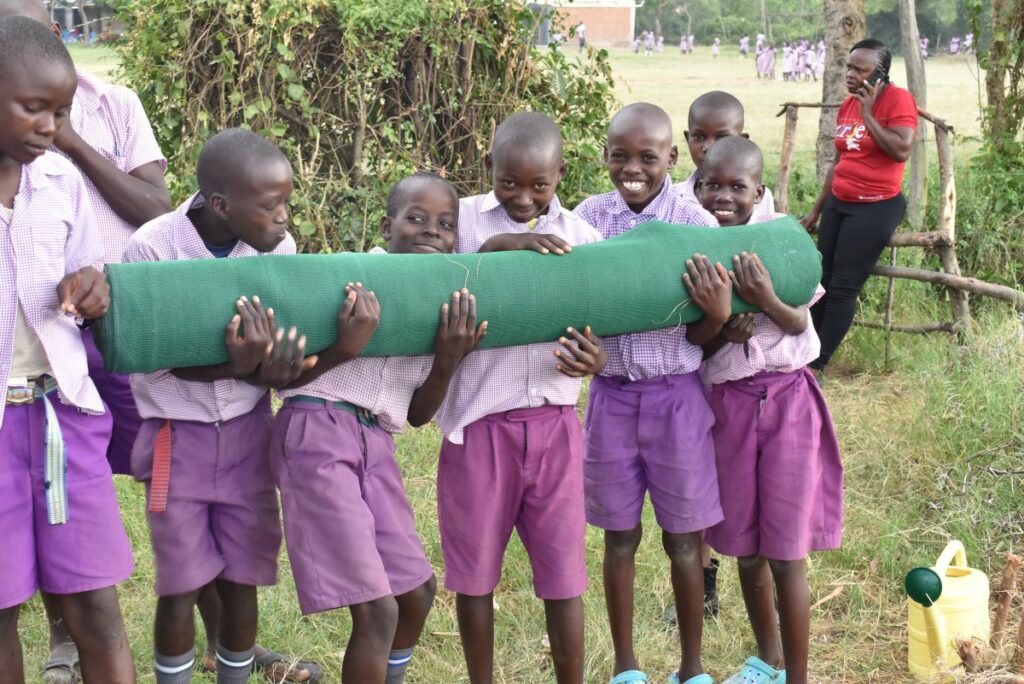
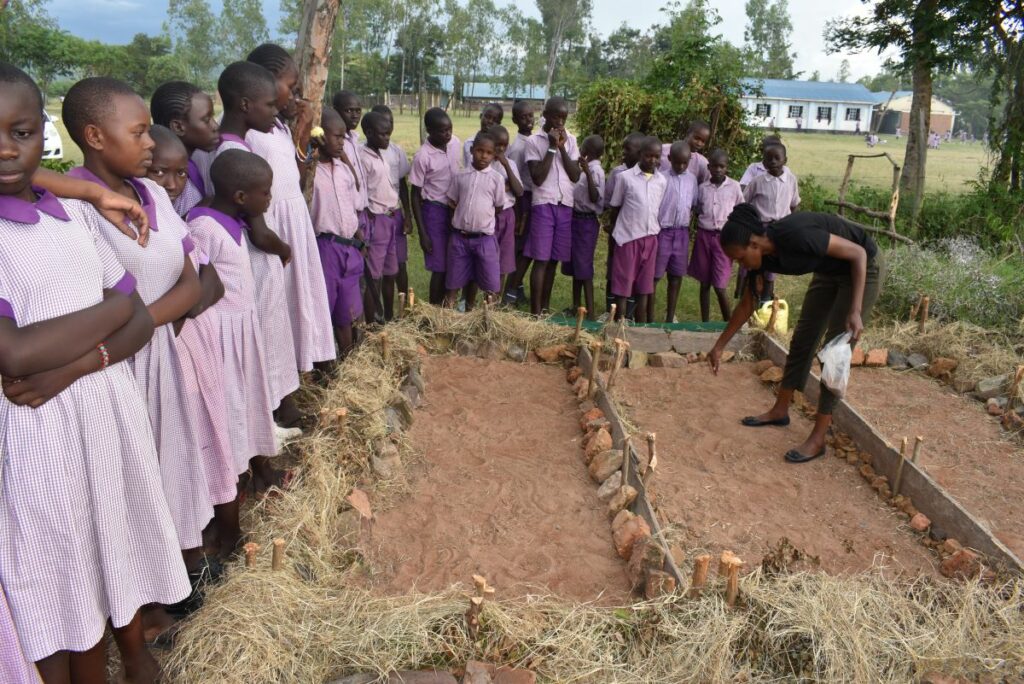
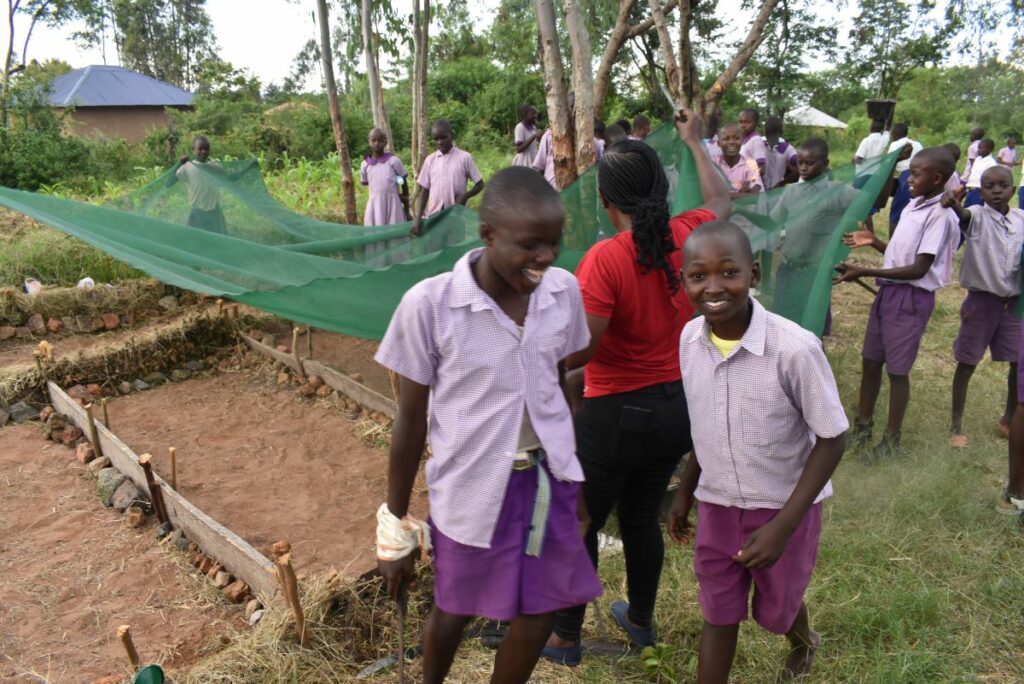
Onyinge Primary School



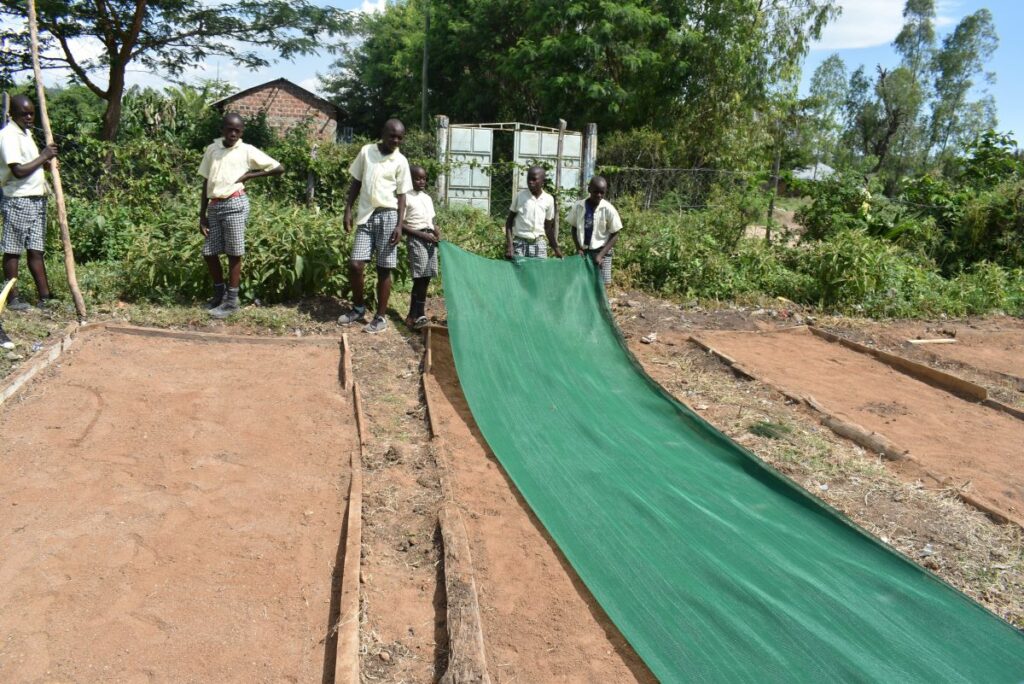
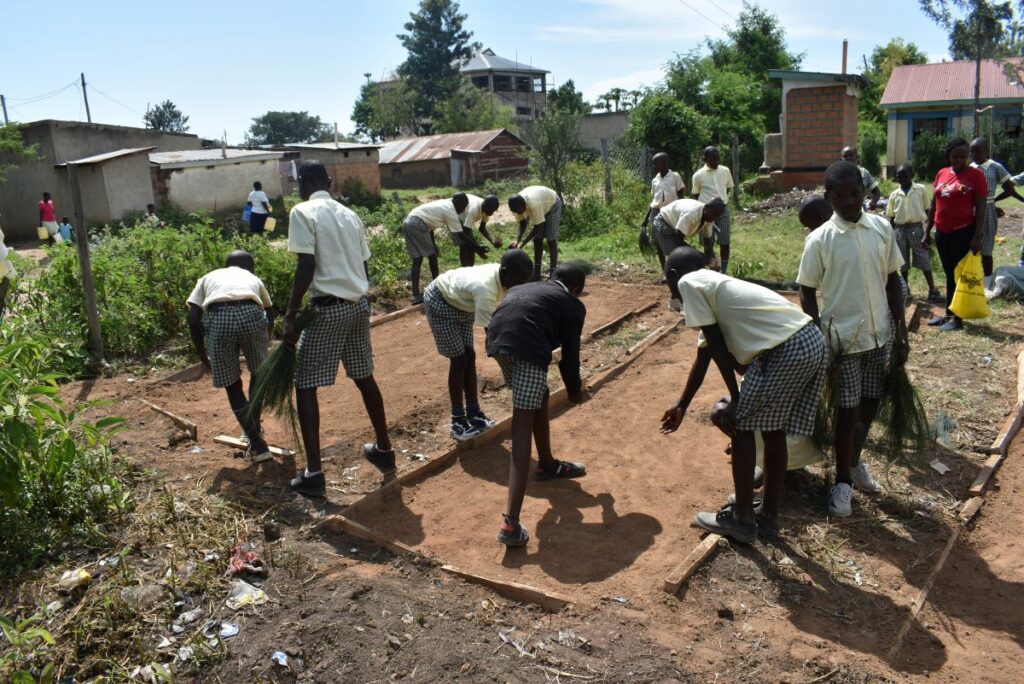
Rachier Primary School

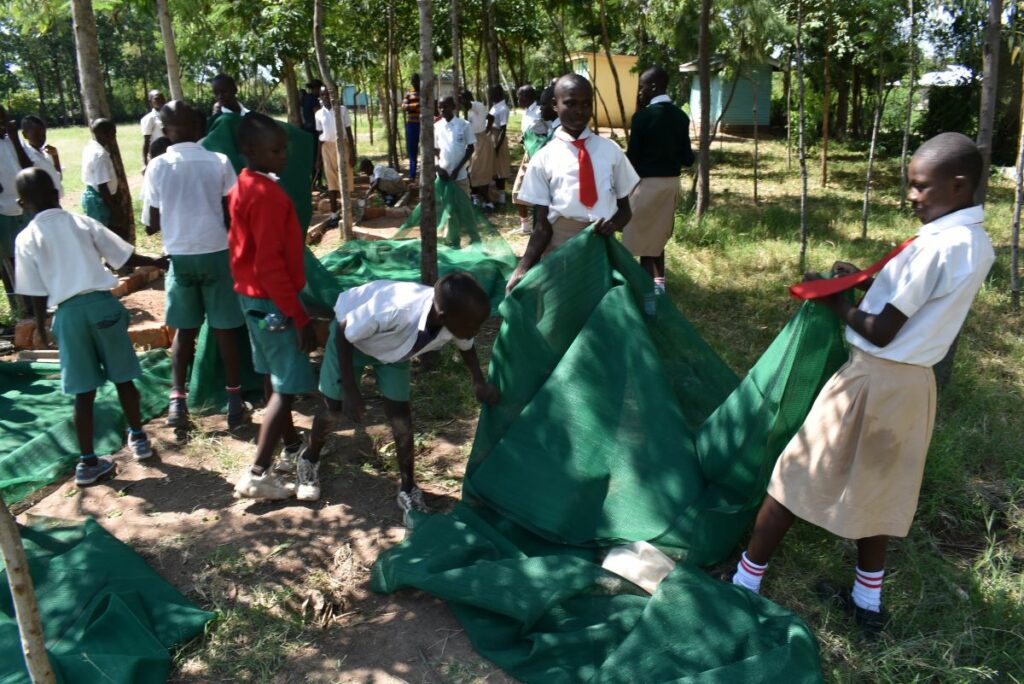

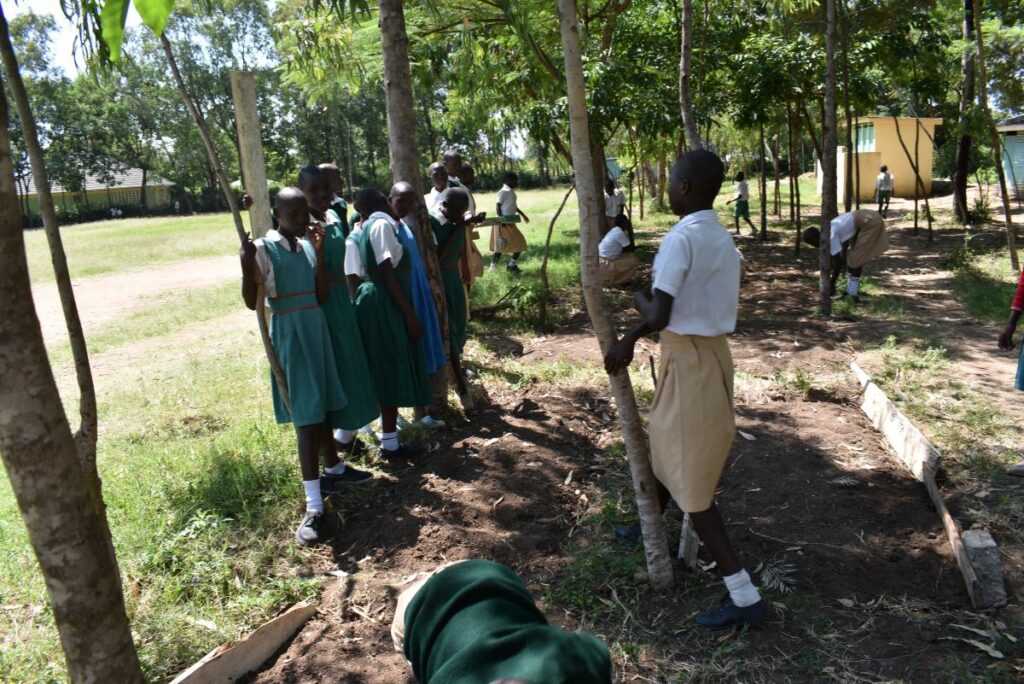
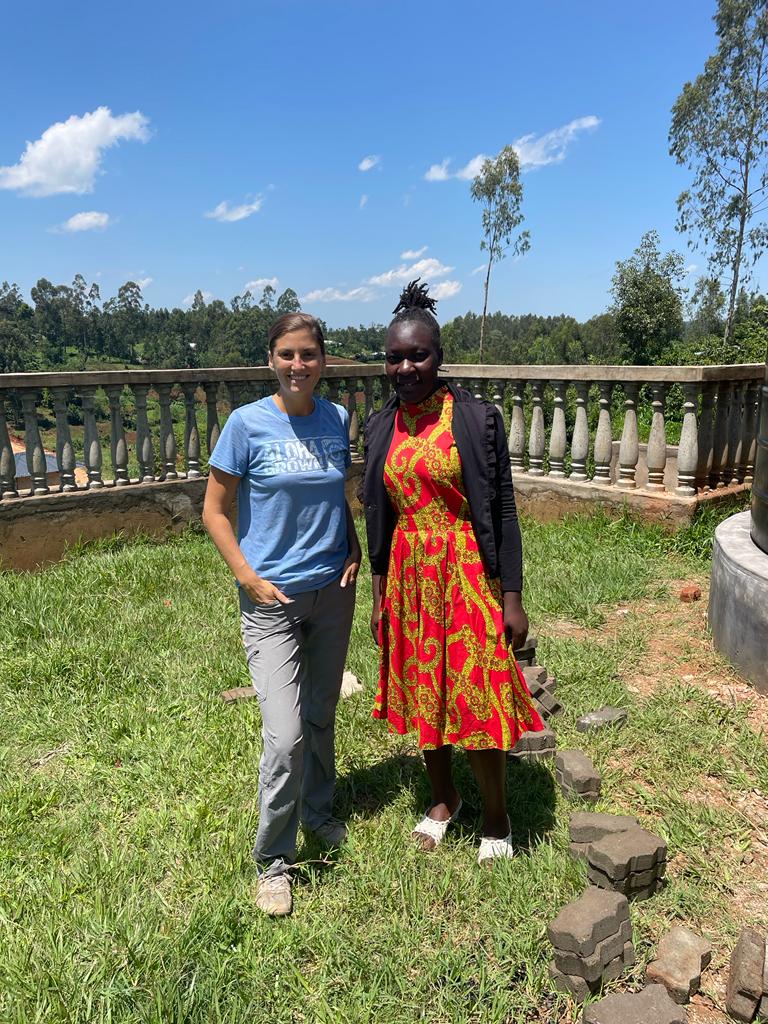
Program
Sam's Garden and Other Gardens
In May 2022, the Global Innovation School welcomed Samantha Koches, a former student of Kijana’s founder and president James P. Cummings at The Benjamin School. Samantha was also a previous volunteer for Kijana in 2013. She is the founder of Nourish All, a non-profit dedicated to improving food access in vulnerable communities.
Samantha assisted Kijana in the culmination of the first year of our “Care, Share and Explore” program. She advised us on the pollinator garden and landscape design, and partnered in building a stronger collaborative team in developing a holistic and sustainable educational program with community connections. Samantha brought and continues to bring a wealth of knowledge and perspective in collaboration with Kijana. She has worked in a variety of settings, including Asia, west Africa, and most recently living and working in Hawaii.
At the beginning of Easter weekend (2022), Samantha organized a collaborative session linking individuals in Hawaii (herself), California (Ed Chandler), Florida (James P. Cummings), and Kenya (members of our Kenya team), to collectively design a preliminary plan for the school gardens. The principle guide in the exercise was Ed Chandler, of Loftgardens Landscape Architecture, of Sacramento, CA. Using the library/media center design plan (see below illustration) developed by Harpreet Dhaliwal (another former student of James P. Cummings), Christopher Dameron, Jeremiah Awori and team members, the three continent joint effort strategized and developed a workable plan (see below concept garden plan illustration).
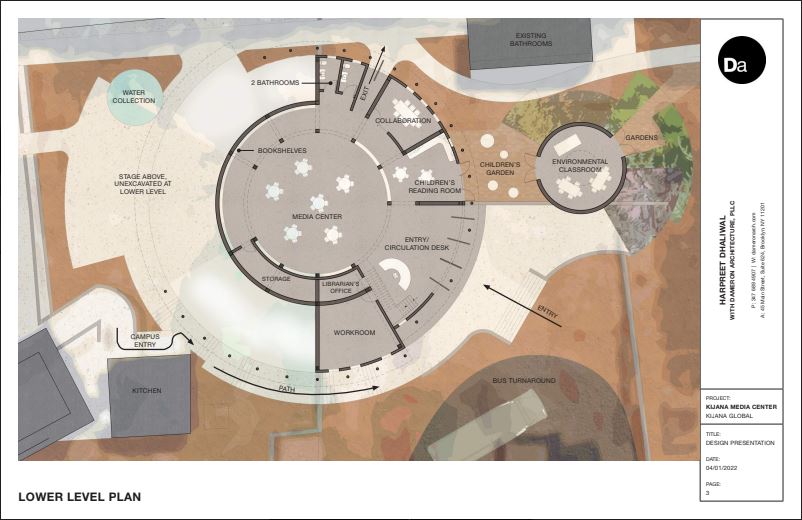
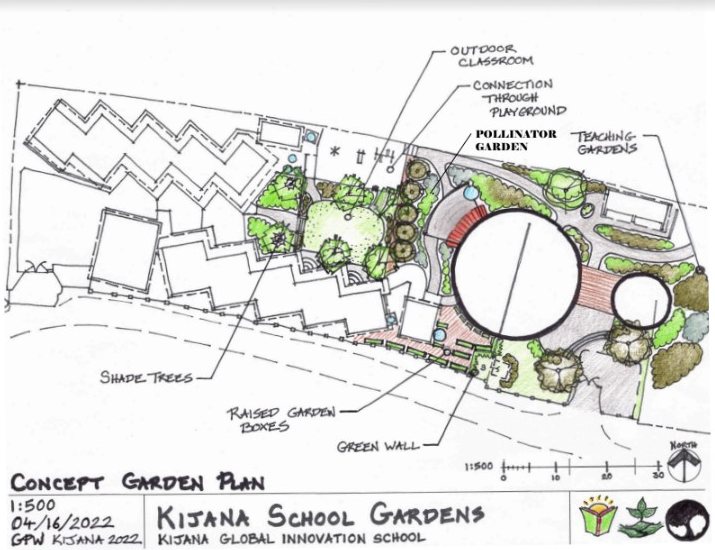
From May 6 – 27, 2022 Samantha Koches of Nourish All lead a three-week program. Nourish All Board Member Jessica Sun also joined her at times during the visit. Nourish All also partnered with Jenipher Nyangah of Shwari Permaculture Organization (Facebook page) and Days for Girls Organization https://www.daysforgirls.org/; based in Butere, Kenya, as well as Kijana School “Care, Share and Explore Team member, led by Mercy Chepsuge and Prideluck Obaga.
The program focused on three areas:
- Expanding school gardens.
- Hosting educational workshops.
- Discussing how to integrate school gardens into the school’s curriculum.
The “Concept Garden Plan” that was developed illustrates:
- Creating a Pollenator Garden – it is located just west of the future amphitheater, along the tree-lined wall
- Expanding the Kitchen Garden – build raised beds, plant more food, and organize the composting area
- Greening of the Playground Area – plant fruit trees, perennials around the playground and lawn
In addition, four permaculture workshops were planned and took place at the school. The workshops were open to students, faculty, and the community. Samantha conducted one workshop on cooking and post-harvest processing. Three were taught by the aforementioned local permaculture educator Jenipher Nyangah and her colleagues. They visited the school and taught the following topics; Soil Health, Composting, and Pollination.
2022
Tree Planting
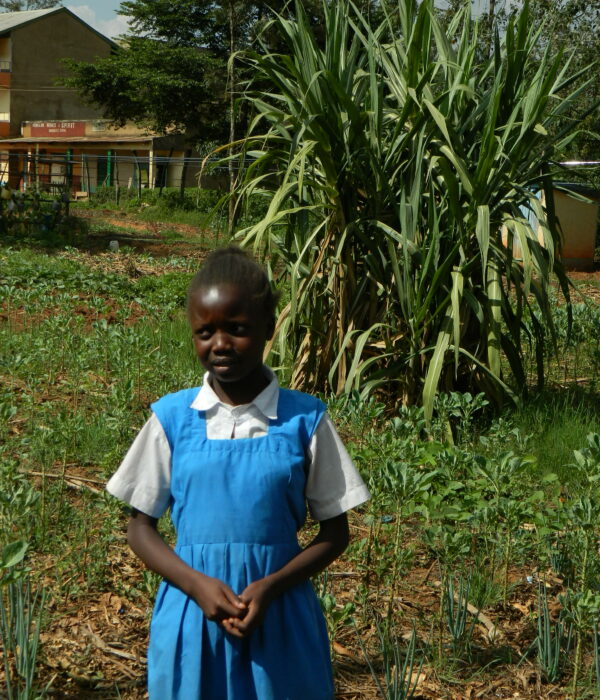

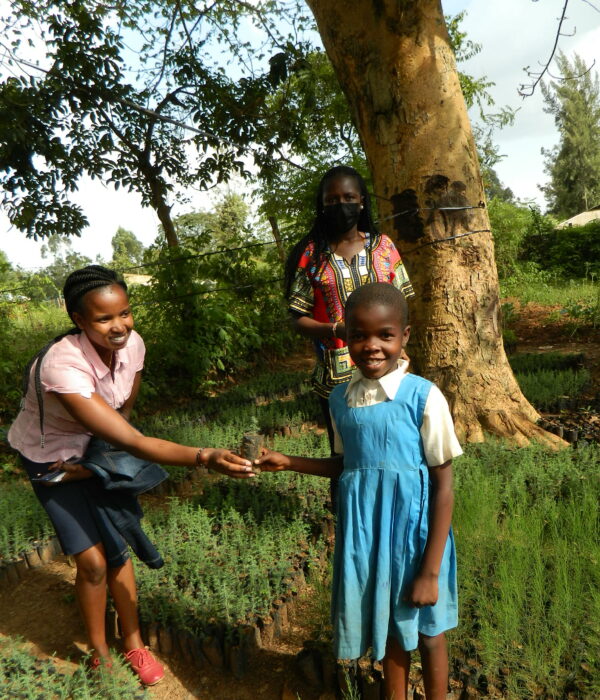
2023
Innovation Garden - Cone Farming



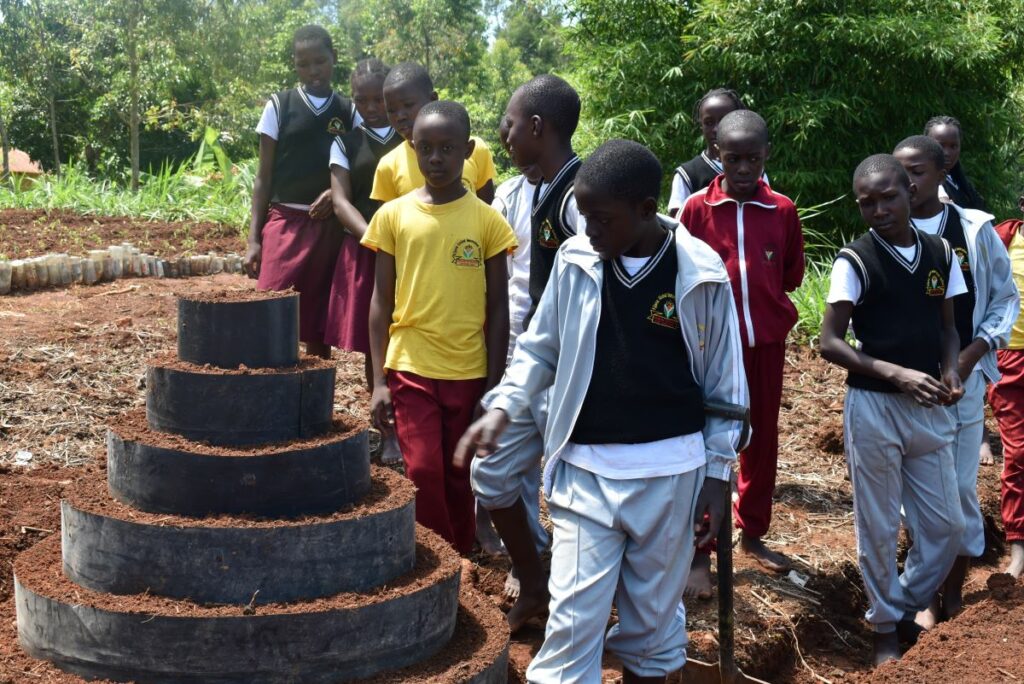
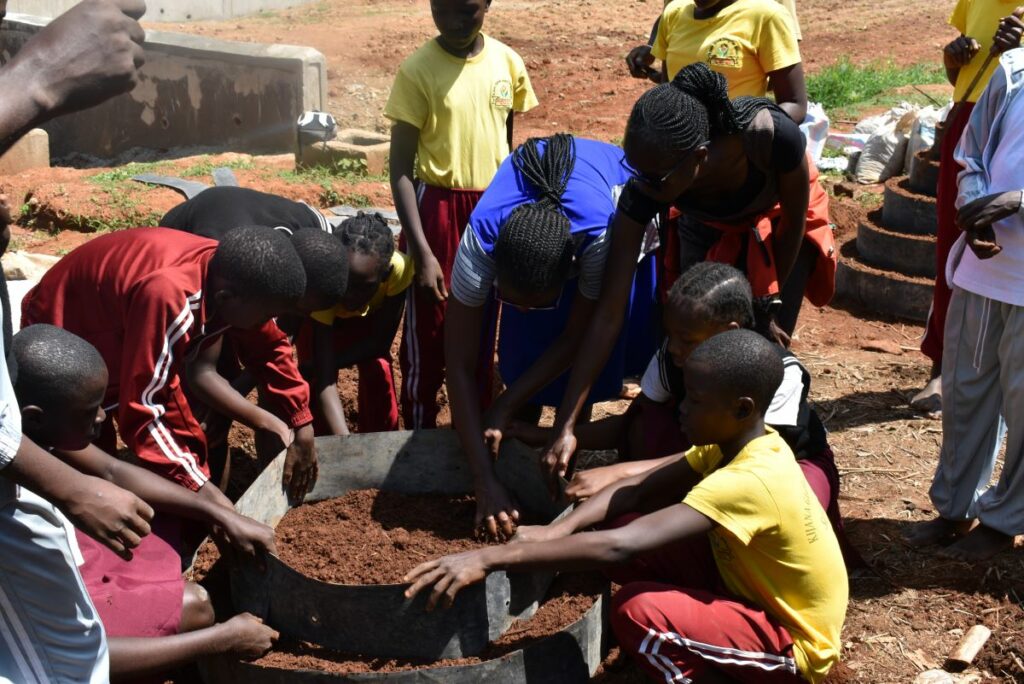

Dehydrator Project
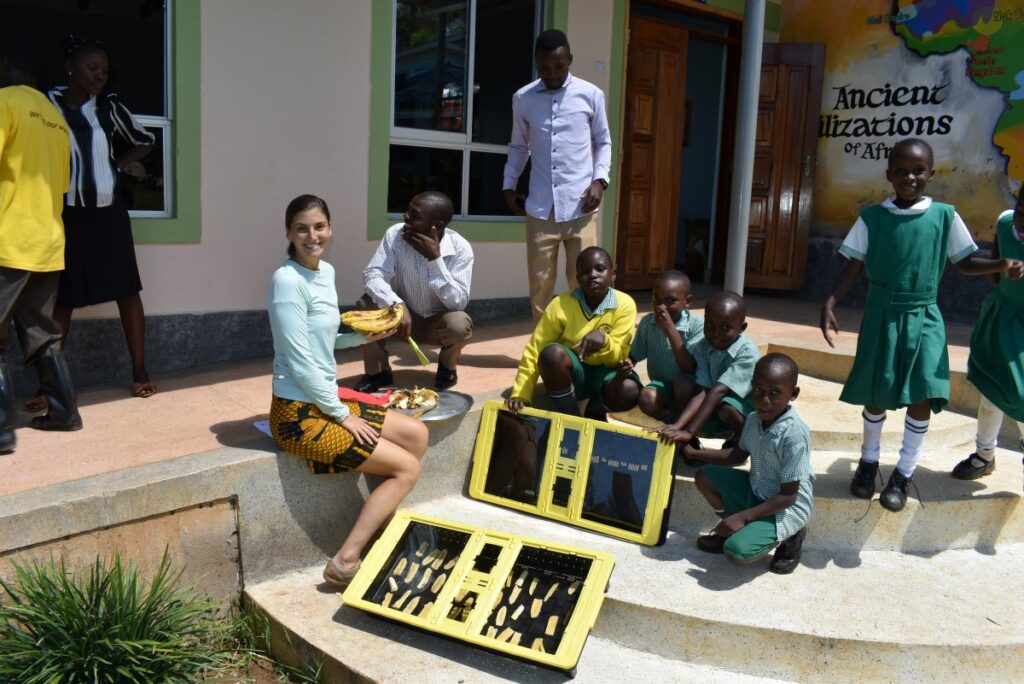

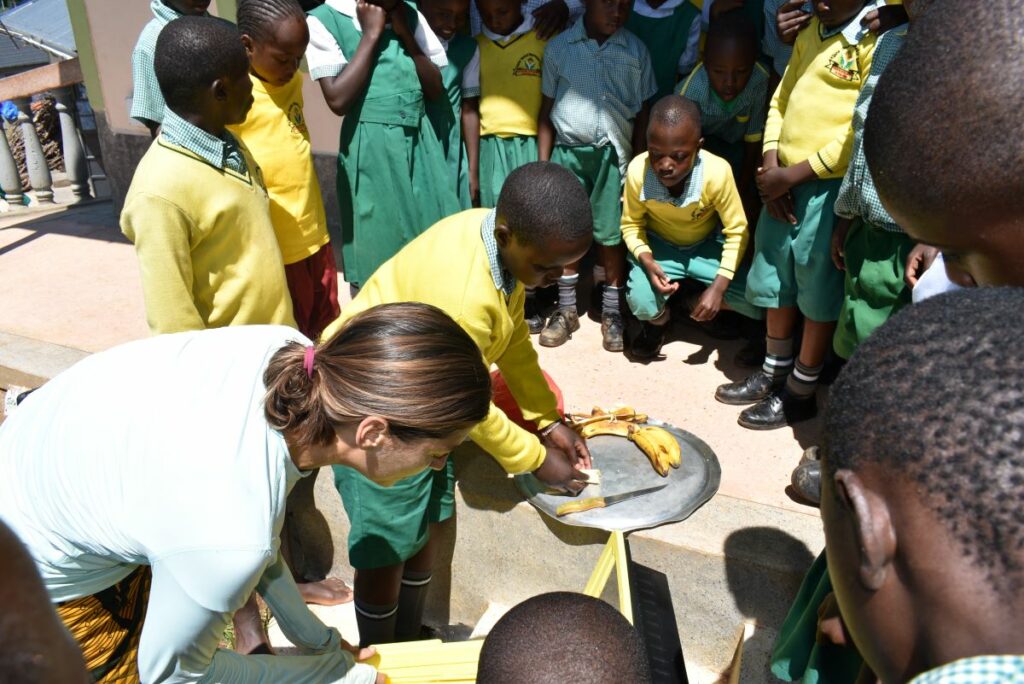
Planting Seeds with Students



Program
Anthem Award
The International Academy of Digital Arts & Sciences (IADAS) recently honored Kijana as a silver award winner in its 2nd Annual Anthem Awards for Community Engagement in ‘Sustainability, Environment & Climate.’ Kijana was one of nearly 2,000 entrants from 43 countries worldwide for the 2022 competition.
On February 15, 2023 the 2nd Annual Anthem Awards were announced. Kijana was proud and humbled to share that were honored as a Silver Award winner in the Community Engagement category for Sustainability, Environment and Climate for our 2021-22 “Care, Share and Explore” program. The Anthem Awards annualy celebrate purpose and mission driven work of people, companies and organizations worldwide that impact and inspire others to take action in their own communities. You can learn more about the Care, Share and Explore program that serve as the main impetus of this distinguished honor.
The Anthem Awards invited winners to develop a one-sentence speech that reflects our winning endeavor. James P. Cummings said, “Care for the world, share it, and explore it.” Without our planet, we have no life. Our lives would not be possible without our human family and exploration and discovery allow us to grow and prosper and appreciate life. Kijana is one vehicle that drives the spirit of progress and allows for the good works to become a reality.
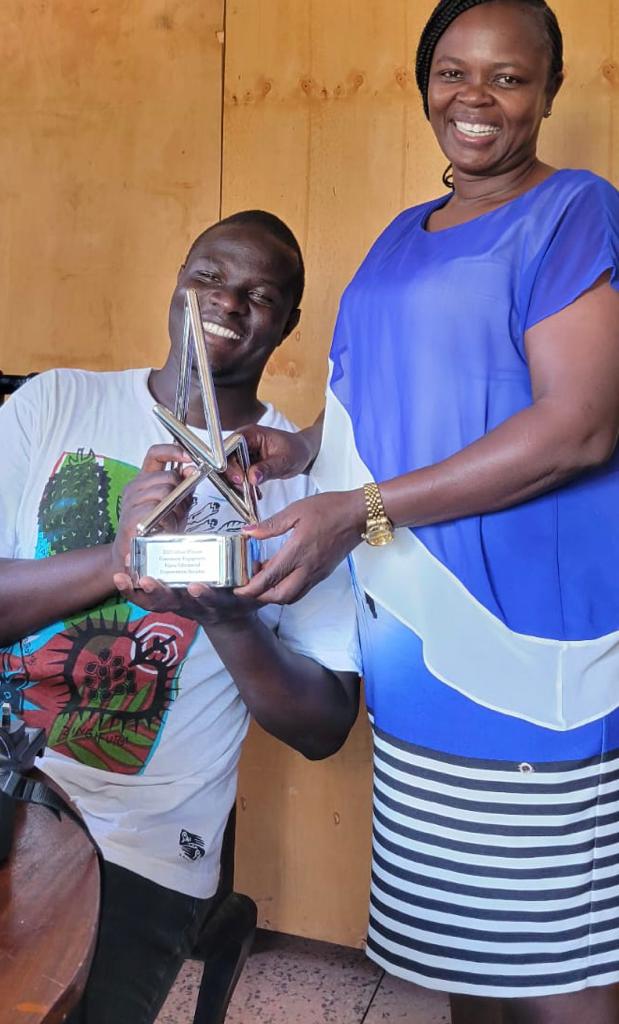
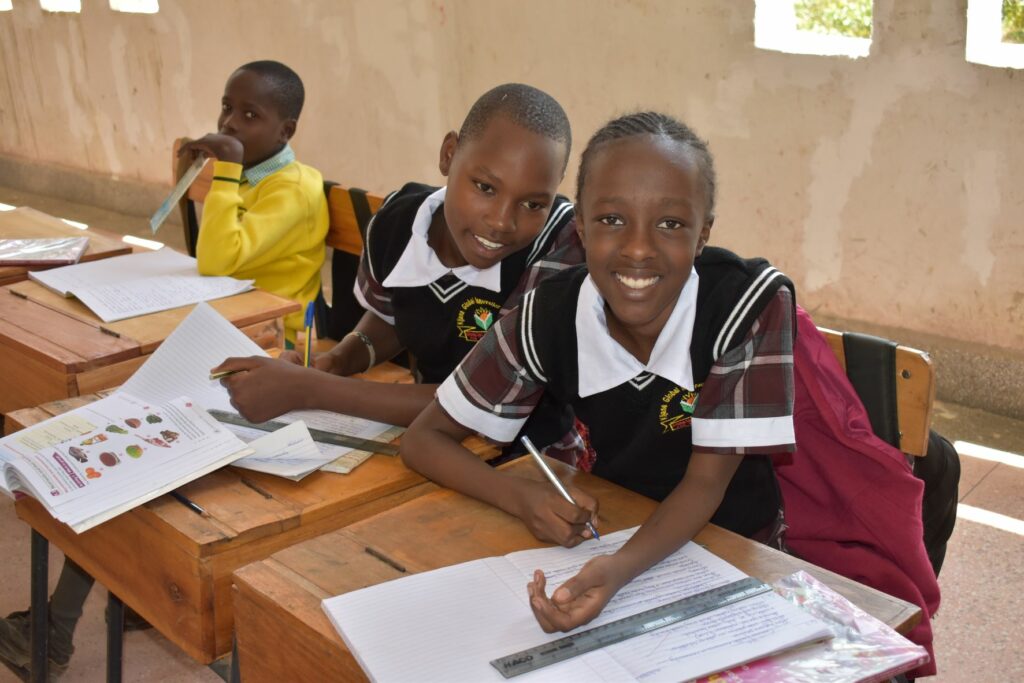
Program
Environmental Education in the Classroom
Information here about activities in the classroom. I need images that reflect the activities.
2023
The Care, Share and Explore leadership team consisting of; Prideluck Ubaga, Mathews Were, Brigit Mbaria and Lawrence Inonda “hit the trails” with student groups in February.
On the nature trail, exploring our environment was the theme of the adventures. On February 1st, a group of 1st and 2nd graders observed and noted what they saw and heard as the explored the environment near the Global Innovation School campus. They made paint brushes using evergreen leaves, twigs and flowers and were shown how to use the brushes they creaated. Students drew colorful images of what they saw. They also carried bottles with them and put sand, stones or seeds in them. Students shook the bottles to create musical tones while they walked the trails.
On February 2nd, it was grades 3 and 4 who ventured out to observe nature. Students were asked to identify; what they saw in the sky, describe the weather conditions, note different water sources they encountered, and state what animals, insects and plants they witnessed. Like grades 1 and 2, the students made paint brushes and drew and colored in some of the images that impacted them during their journey.
The last group of the first week of February was, gardes 5, 6 and 8. As students walked and observed, they; identified types of plants, collected leaves and parts of flowers. They also identified insects, observed the sky and described what they saw in it. In addition, students created “nature impressions” in clay from the leaaves, seeds, stones, twigs, etc. they collected along the way. Like other grades, they made paint brushes from what they gathered and used them to create colorful images that stood out from their expoloration.
The above experiential excursions are so beneficial and impactful to holistic education that Kijana and the Global Innovation School fully embraces and incorporates on a practical level.

